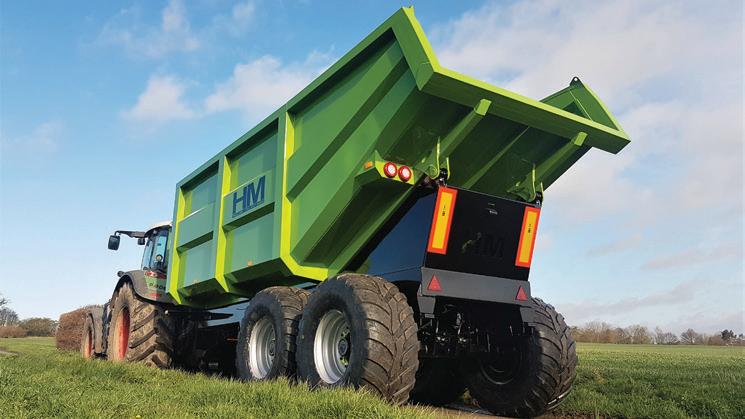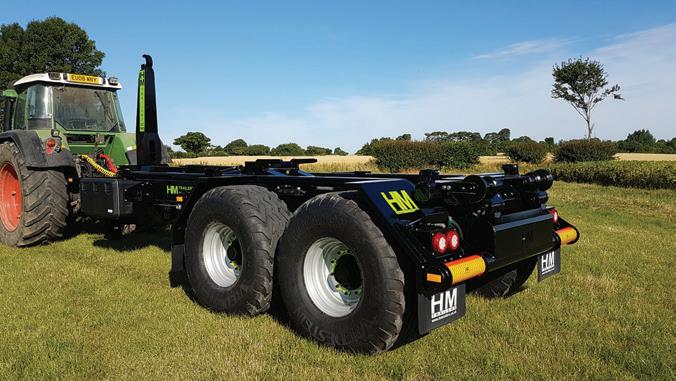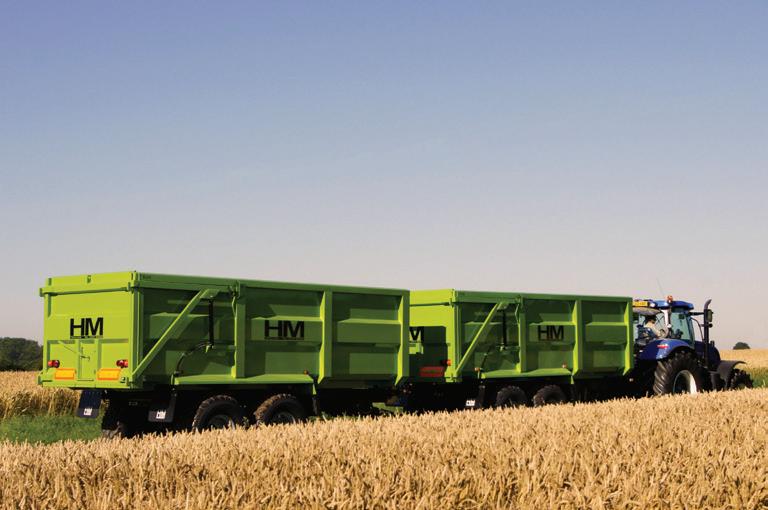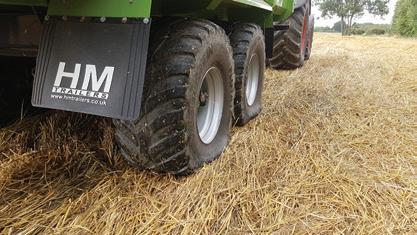

















With over 17,000 different grades, our local sites can meet all your prescription needs by matching fertiliser to soil and crop requirement.
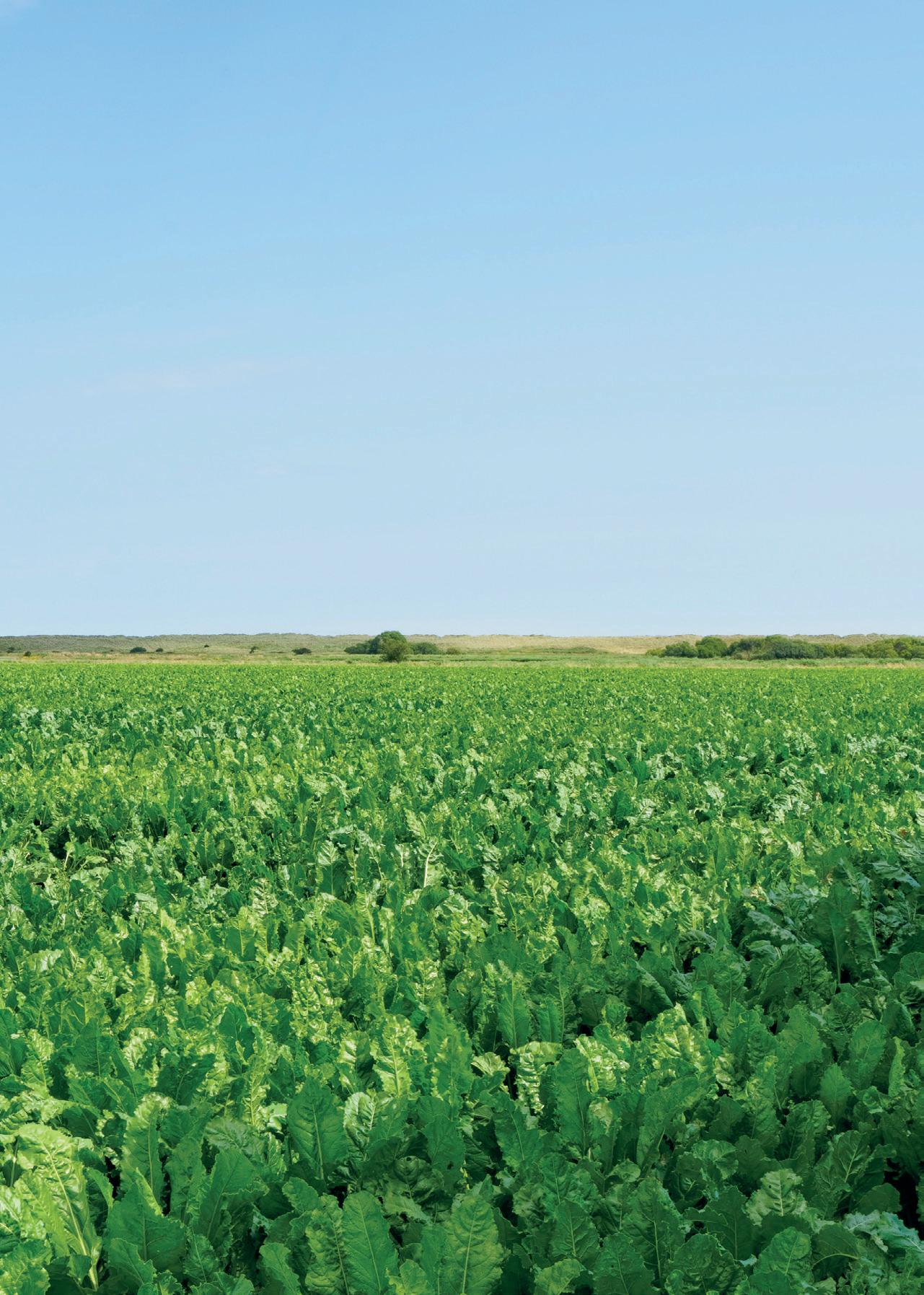
EDITORIAL
Editor:
Johann Tasker | T: 07967 634971
E: johann@ruralcity.co.uk
Design:
Mark Shreeve | T: 01502 725839
E: mark.shreeve@micropress.co.uk
Advertisement production:
Jade Soanes | T: 01502 725840
E: jade.soanes@micropress.co.uk
ADVERTISING SALES
Chloe Miller | T: 01502 725844
E: chloe.miller@micropress.co.uk
Danny Lewis | T: 01502 725862
E: danny.lewis@micropress.co.uk
Dan Rice | T: 01502 725858
E: daniel.rice@micropress.co.uk
Mat Roffey | T: 01502 725854
E: mat.roffey@micropress.co.uk
Mark Tait | T: 01502 725803

E: mark.tait@micropress.co.uk
Frustration and anger – two emotions many farmers will be feeling this month following yet more delays to the government’s flagship agri-environment scheme.
Defra was supposed to launch the revised 2023 Sustainable Farming Incentive in August – having pulled the plug on the 2022 SFI and revised the scheme to make it more attractive to potential applicants this year.
Easier said than done
Midland Farmer is a controlled circulation magazine published monthly for farmers and growers in the Midlands (Derbyshire, Herefordshire, Leicestershire, Lincolnshire, Northamptonshire, Nottinghamshire, Shropshire, Staffordshire, Warwickshire, West Midlands and Worcestershire) or companies supplying goods and services to the sector. To be included on the circulation list, a farmer must have a minimum of 70 acres of land, or 50 dairy/beef stock, or 50 breeding sows/250 growing stock, or 15,000 laying hens/broiler chickens. Intensive horticulture units are required to have a minimum of two hectares.
If you no longer wish to receive this magazine, please email your name, address and postcode as it appears on the wrapper to adam.gunton@micropress.co.uk
© Countrywide Publications 2023
Published by Countrywide Publications, Fountain Way, Reydon Business Park, Reydon Suffolk IP18 6DH

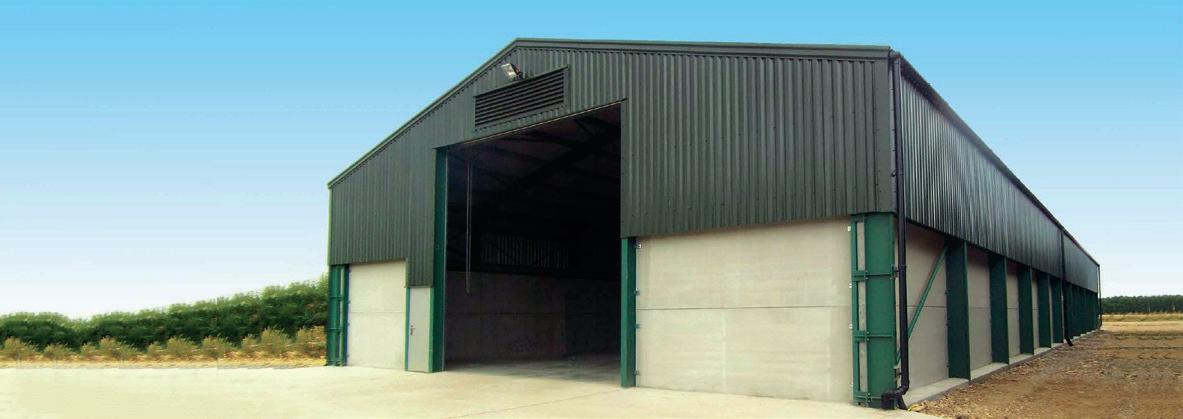
T: 01502 725800
Printed by Micropress
Printers Ltd T: 01502 725800
Doing so has proved easier said than done – despite the many promises made by government ministers that the new-look scheme will be more flexible and offer easier ways for farmers to be rewarded for looking after the environment.
New actions include payments for soil testing, the production of nutrient management plans and integrated pest management – as well as payments for companion cropping and avoiding the use of insecticide.
The SFI has repeatedly been billed as a way farmers can recoup some of the income lost as the Basic Payment Scheme (BPS) continues to be phased out – leaving a huge gap in revenue for many farm businesses.
The UK government has pledged that the £2.4 billion that was allocated to the BPS will still be spent on farming – including via environmental payments made through the SFI and Countryside Stewardship. And it wants 70% of farmers to joint the scheme.
But it appears that “technical issues” similar to those experienced by Countryside Stewardship applicants (see page 4) have now engulfed the SFI too. And once again, it is farmers who are the losers –especially when it comes to cashflow.
As ever, many farmers are keen to do their bit for the environment. But they now face doing so at their own expense because the SFI is not ready. This uncertainty makes it difficult to plan a sustainable future for farm businesses.
For its part, Defra has said it is making final adjustments to ensure the scheme is as straightforward as possible. And it says applications will be accepted shortly. For the sake of farmers and the environment, that can’t be soon enough.
Johann Tasker, Editor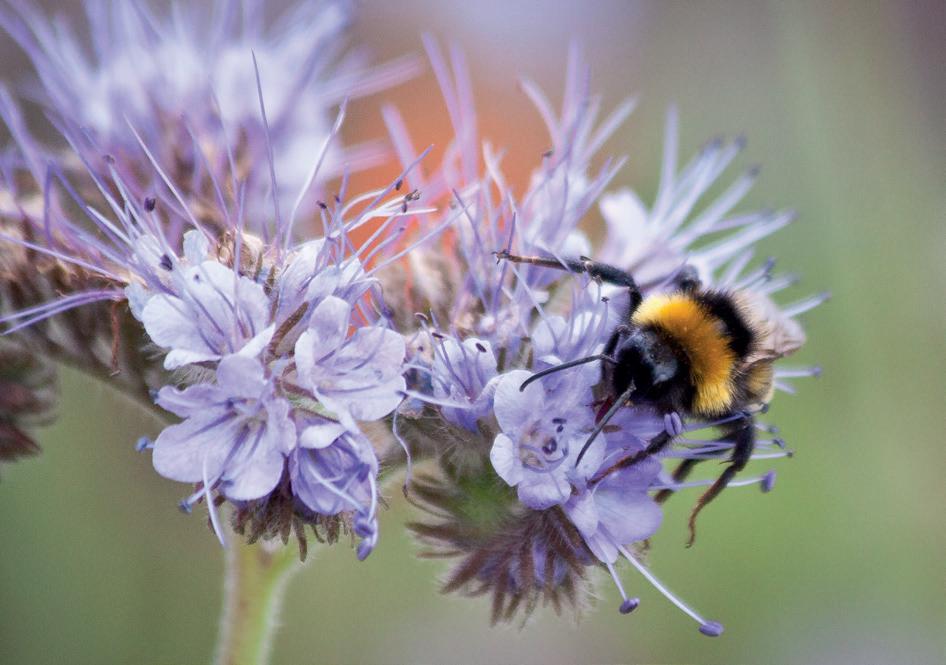
Farmers have until the middle of this month to apply for 2024
Countryside Stewardship mid -tier agreements after the government extended the deadline.
The deadline was extended until Friday 15 September following glitches with the system. Defra says those technical issues have now been resolved and itwants to give people more time to submit applications.
Countryside Stewardship plays a significant role in the government’s

By extending the application win dow, Defra says more farmers can ap ply and be paid for environmental work alongside sustainable food production – ranging from restoring wildlife hab itats and managing woodlands to mit igating flood risks.
Popular scheme
The scheme has steadily evolved fol lowing farmer feedback. Some 32,000 agreements are already successfully in place across England for 2023. This
Defra says
removal of the limit on the value of capital items in the water or air quality, hedgerow and boundary, or natural flood management priorities.
The government has also introduced what it describes as a broadened offer to support natural flood management, create more areas of scrub, and reduce nitrogen inputs in groundwater.
It has removed the need for farmers to request an application pack before starting their application. At the same time, automatic checks
an annual declaration.
Earlier this year, Defra said revenue payment rates had increased on average by 10%, capital payment rates increased by 48%. These options have both been made simpler and more workable.
Scheme administration has been made more efficient. Future improvements include greater flexibility over when farmers can can apply and how they manage their agreements, with improved access for tenant farmers.
cation window for Countryside Stew ardship.”
The Rural Payment Agency says it has been working closely with affected applicants and agents to support applications, with actions taken to resolve issues as quickly as possible. It says systems are in place to assist farmers through the process.
RPA chief executive Paul Caldwell said further improvements to the online system were already in progress –including greater flexibility over when farmers can apply and how they manage their agreements.
Mr Caldwell said: “We’ve already had 3,900 applications successfully submitted. With this extension, we can make sure that others who have not fully submitted their application, or those who haven’t yet applied, have the time they need to do so.
“I would encourage anyone who has not yet fully submitted an application to do so. Should anyone have any difficulties with amending their land details then we have guidance available on this and applicants can contact us if they encounter any issues.”
Fortunately we were able to get on with a couple of small jobs before the halt in the harvest put a halt to the drainage.
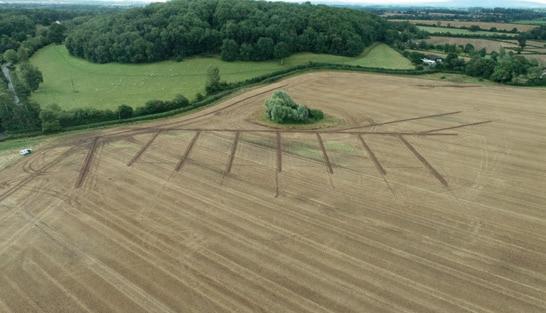

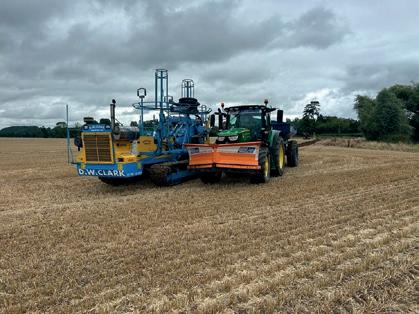
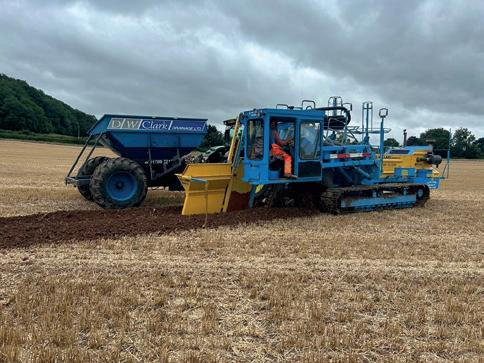
One site was in greater need for drainage than the other. The one with the greater need was running water after the first 12 metres of drainage had been laid.
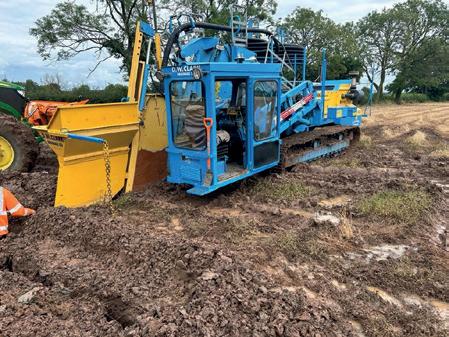

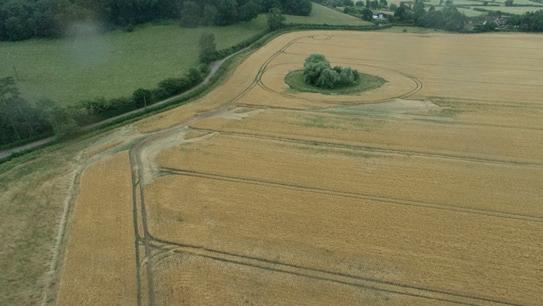


August, usually the start of everything, harvest in full swing, phone going mad with clients telling us their crops are off the field and the job juggling begins. This year the phone started ringing as usual then it slowed down as the rain set in. DAM AND BLAST we heard nearly every local farmer say. . . .
What a difference 12 months makes
AUGUST

Farm machinery to the value of nearly £5.6 million has been sold by regional auctioneer Halls in the first seven months of an exceptionally busy year.
Farm dispersal sales have been held across an area spanning from the West Midlands to mid- and north Wales, while collective farm machinery auctions are held in Shrewsbury and Kidderminster throughout the year.
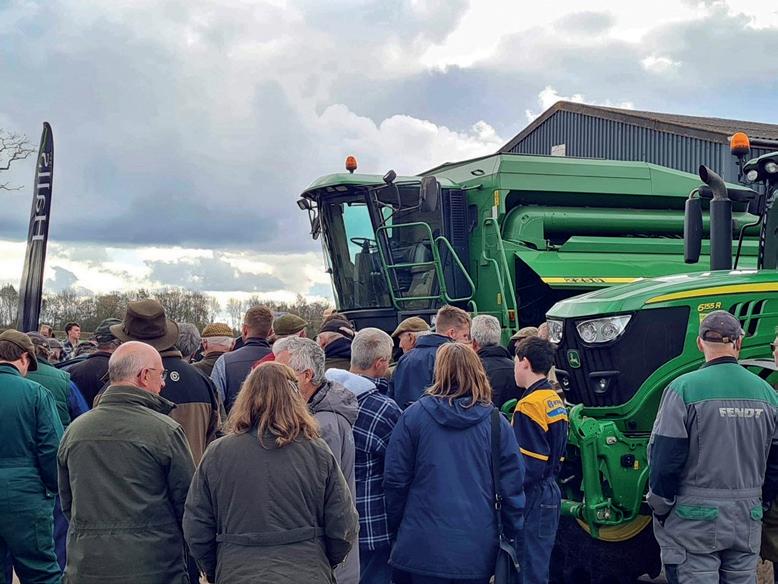
Bidders unable to attend the auctions can either bid and purchase online through the MartEye platform or leave telephone bids with the auction team at Halls, which has a network of offices across Shropshire, Powys and Worcestershire.

Traditionally, most farm dispersal sales are held in the autumn. But this year Halls has been organising auctions virtually every month as farmers have retired, changed farming policy or passed away.
Auctioneer Jonny Dymond, manager of Shrewsbury Auction Centre, says the increased number of dispersal sales and buoyant prices for second hand farm machinery are the result of
a combination of factors.
“We have had a tremendous run of sales and, as our good reputation grows by word of mouth in farming circles, we are extending our geographical reach and attracting new clients,” he says.
“At our dispersal sale at Penley, near Wrexham this summer, we sold a 2012 Land Rover Defender Hardtop 90 for £25,500. It was a particularly high spec, low mileage example, but it was still an exceptional price.
Auctioneer Halls has held sales almost every month this year.
Trees provide vital refuges for wildlife, clean our air, absorb carbon and so much more. They’re one of our best natural defences in the climate and biodiversity crisis.

Trees can do a world of good for your business too. Grow shelterbelts, reduce flooding and soil erosion and nurture your soil, without taking valuable land out of production.
Plant a healthy future for people and nature with our MOREwoods scheme. Our expert advisers will guide you through the application process, create a bespoke species mix, and supply the trees and protection you need. All with generous funding of up to 75%. Apply today to plant this winter.
woodlandtrust.org.uk/plant
MOREwoods is funded by
• More results will become available
Poor weather has resulted in disappointing yields for the first trials of recommended list winter wheats this harvest.
This season’s first harvest results were published on 16 August by the Agriculture and Horticulture Development Board. They included four fungicide-treated sites in Suffolk, Devon, Kent and Cheshire – and a fungicide-untreated trial in Devon.
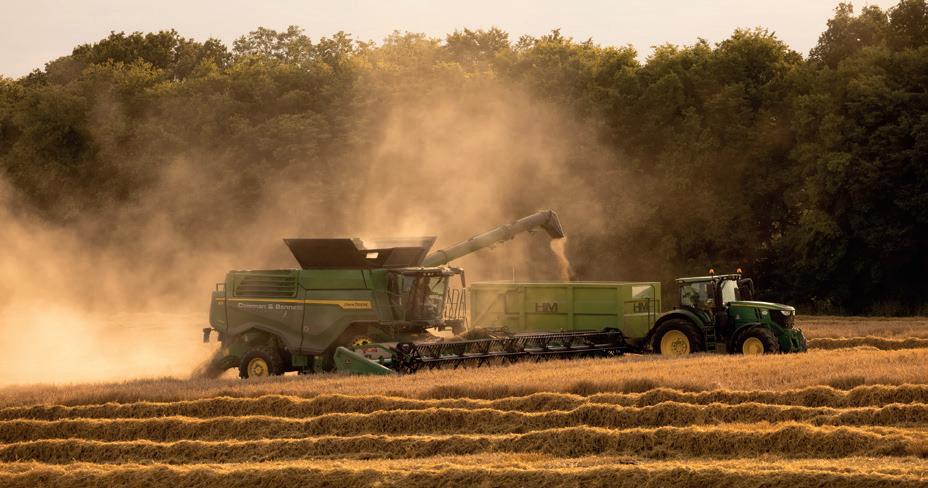
The average yield of control varieties in the fungicide treated trials stood at 10.74 t/ha – some 0.34t/ha below the five-year average of 11.08t/ ha – although this is likely to change as more results become available.
Trials were drilled in good conditions, with crops doing well during the mild autumn – going into spring in good condition. But a wet April and May gave septoria a big boost, despite a robust spray programme.
Initial results
Group 4 hard varieties led on yield. SY Insitor achieved (107% of controls)
Next were Champion and KWS Dawson (both 106%). Then came Group 4 soft RGT Bairstow (105%); and Group 4 hard Oxford (105%); followed by Group 4 soft LG Redwald (104%).
Group 3 varieties performed close to their five-year averages. Top were KWS Guium and RGT Rashid (101%), followed by KWS Brium and LG Prince (100%). RGT Wilkin son achieved 94%, well below its fiveyear average but more results are due.
Group 1 Skyfall performed well (100%) with other Group 1s close to their five-year averages. Group 2 va rieties also performed close to their five-year averages with KWS Ultima tum (101%) just ahead of KWS Extase (100%).
Specialist variety RGT Wolverine, with a specific recommendation for resistance to barley yellow dwarf vi rus (BYDV), yielded 101%. This vari ety performed well again at the Devon
site where it was equal second highest yielding.
Five-year average
The 2023 results show yields based on one season. The five-year average is a better measure of variety performance over seasons (2019 to 2023). With few trials in yet these results largely reflect the recommended list.
Current good performers include Group 4 hard variety Champion (106%), Group 4 soft LG Redwald (106%), Group 4 hard KWS Dawsum and SY Insitor (both on 104%). Next were Group 4 hard Oxford, and Group 4 soft varieties Gleam and RGT Bairstow (all 103%).
Group 3s
For Group 3s, KWS Guium (101%) led the way ahead of KWS Brium, RGT Wilkinson and LG Prince (all 100%). Highest Group 2s were KWS Extase and KWS Ultimatum (101%) with the highest Group 1 being KWS Zyatt (98%) followed by Skyfall (96%).
The AHDB said data could only be
The AHDB Recommended Lists (RL) trials test varieties under optimum conditions – so care should be taken when making comparisons with commercial yields.
Results from individual trial sites should not be used to make conclusions on variety performance. The RL publications are based on information from trials across the UK over several seasons.
As more information becomes available from the current harvest, this will contribute to the over-trials averages –which comprise four years for oilseeds and five years for cereals. These averages provide better information for comparison between varieties.
Performance variation is not the responsibility of AHDB. Since the focus is to test new varieties, not all RL varieties are presented. Yields for well-established varieties are published at ahdb.org.uk/rl
sessing the potential of the candidates over multiple seasons, it added.
Potential bread making varieties are KWS Dragum (102%) and SY Cheer (98%). Potential Group 3 biscuit varieties are Bamford (105%), LG Arkle (102%) LG Grendal (101%) and Almara (99%).
Hard feed candidates LG Beowulf (106%), Bolinder and LG Redrum (104%) performed well on yield, followed by soft Group 4 Blackstone (103%). A clearer pattern of candidate performance will develop as the
Results will change as the season progresses
Genetic improvements are bringing better disease resistance to oilseed rape varities – helping to make the crop easier to grow.
Improved genetics are focusing on keeping rape stems healthy – creating varieties with better resistance to phoma, light leaf spot and verticillium, says Chris Guest, managing director of LS Plant Breeding (LSPB).

“Phoma resistance has taken a major step forward,” says Mr Guest.
Progress includes the launch of RlmS – a new genetic trait by LSPB – in 2021. Four LSPB varieties with the RlmS trait – Murray, Vegas, Flemming and Respect – are on the AHDB Recommended List (RL) with seed available to growers now.
“They provide an important complementary resistance to Rlm7, which has been the mainstay for some years,” explains Mr Guest. “RlmS has a different genetic background – an adult stem-based resistance – unlike Rlm7, which acts on the cotyledons.
RlmS resistance is also associated with strong overall plant health, adds Mr Guest. The gene has good stem resistance – an additional benefit against late season disease, he says.
“We will bring further varieties with RlmS resistance – some already in trials and others in the pipeline –to complement Rlm7 and give longevity of phoma resistance to growers.”
Light leaf spot infection comes from autumn trash. After a latent period of two to three months, it is most damaging in the spring, producing stem and pod infection with most sources quoting a significant potential yield loss of about 1t/ha.
There are three major gene resistances. Each has a different mechanism to stop initial infections, to stop conidial production and cycling and to reduce overall growth.
Recommended list ratings have shown a steady upward trend with LSPB Turing at the top of the RL for the UK in both East/West and North regions.
Turing scores 7 for light leaf spot, closely followed by Vegas (8) and Murray in the East/West region (7), explains Mr Guest.
“There is a strong correlation between yield and light leaf spot resistance – and as such this should be a key focus for growers thinking of oilseed rape for harvest 2024.”
Verticillium also has a significant impact on yield with loss figures of 1224% quoted in one AHDB study. But LSPB trials suggest yield losses may
Phoma resistance has taken a major step forward, says Chris Guest.
Results from a single location should be viewed with caution. But they suggest Turing, Murray and ance, yielding some 6.4t/ha – some
Wregional table when it was added to the AHDB Recommended List last autumn.
“As on-farm yields start to come in from Murray growers, we are hearing reports from merchants and from growers that confirm its RL rating,” says Chris Guest.
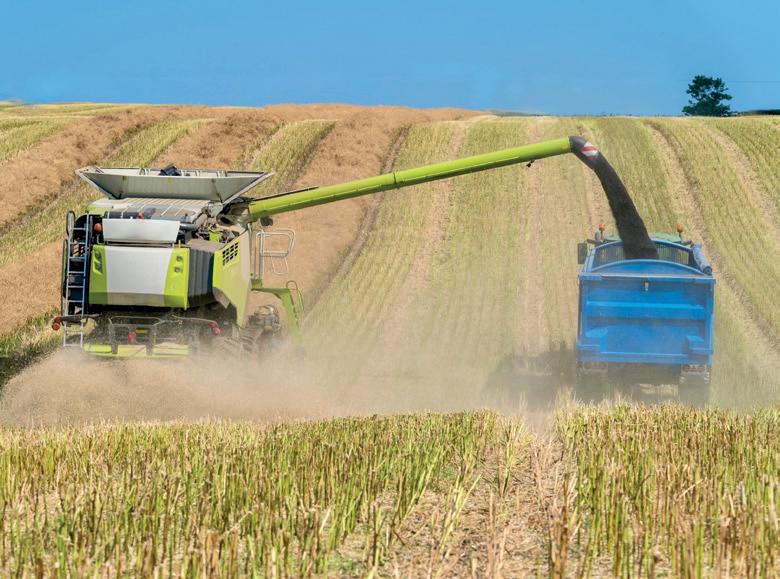
Murray is one of four LSPB varieties with the RlmS gene for improved phoma resistance, a strong rating for light leaf spot and excellent verticillium resistance – giving a head start in the yield contest.”
Frontier Agriculture regional seed manager Chris Piggott points to results from one grower in south-east England. Murray yielded 4.7t/ ha compared to a farm average of 3.5t/ha – and
“At £400/t, including bonuses, that’s £480/ ha increase in gross margin,” says Mr Piggott. “Across his total Murray crop of 20.20ha, he has almost £10,000 extra in the bank.”
Another grower says Murray proved to be the best of his three recommended list varieties. Weights from the merchant made Murray’s average 3.85 t/ha, compared to the farm’s other winter oilseed rape varieties of 3.4 t/ha and 3.25 t/ha.
Choosing Murray for the largest area of his oilseed rape was a good decision. Although it some crop shed across all three varieties due to high winds and a very wet July, Murray still delivered the most.




he potential for UK farmers to ramp up homegrown chickpea production is the subject of a new research project led by crop
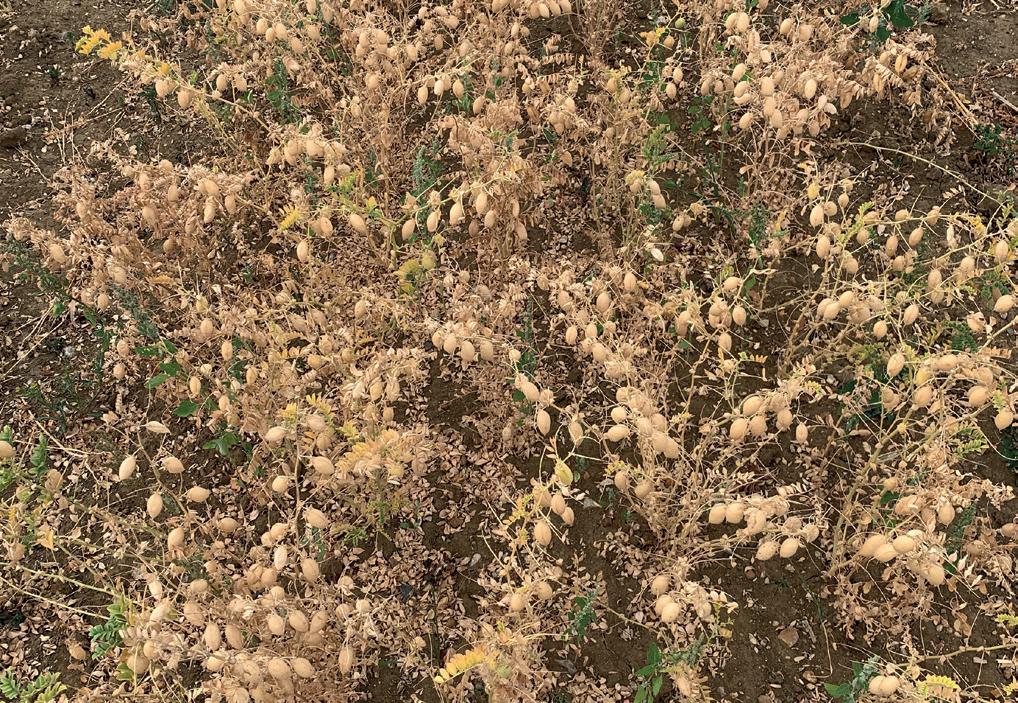
Scientists behind a two-year feasibility study have received £500,000 from Defra’s farming futures research and development fund. They believe chickpeas could become an
A cool-season legume, chickpeas have the potential to reduce on-farm fertiliser requirements and help curtail greenhouse gas emissions associated with the production and applica-

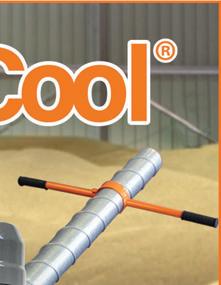
Current UK legume production is mainly restricted to field beans and combinable peas. But a large proportion of these crops are destined for animal feed and are not optimised for



In contrast, chickpeas are used in the UK food industry but rarely grown here. This is largely due to the scarcity of adapted varieties and the lack of knowledge both growers and advisors have of the crop.
UK food companies annually import 60,000 tonnes of chickpeas for products including stand-alone tins, pouches of cooked chickpeas and packets of dried pulses – and as a key ingredient in ready-meals and bakery products.




Variety trials and agronomy testing will be carried out by NIAB and specialist seed company Premium Crops, ranging from small plots up to field-scale evaluation, says NIAB head of breeding Phil Howell.
End-use quality assessments will be undertaken by Norfolk-based grower Place UK, which has successfully grown chickpea crops to sell through its vertically-integrated food ingredients business.

• Variety has consistent reputation
• Suitable for range of conditions
• In rotation for foreseeable future
ALincolnshire grower says winter barley will remain firmly in his rotation after successfully returning to the crop with two-row feed variety Bolton.
Tim Booth, who achieved an average yield of 9.4t/ha, says Bolton is living up to its reputation as a consistent, high-yielding and straightforward variety at JN Booth & Sons, near Swineshead.
Mr Booth grows 404ha of arable crops – including winter wheat, oilseed rape and winter barley – on a range of soil types. He had given up growing winter barley but started again two years ago when widening his rotation to include a good entry for early drilled oilseed rape.
A positive experience with two-row Lightning in 2022 saw Mr Booth try Bolton for 2023. Both varieties are by Elsoms and Mr Booth now plans to keep winter barley in the rotation for the foreseeable future, drilling Bolton again this autumn.
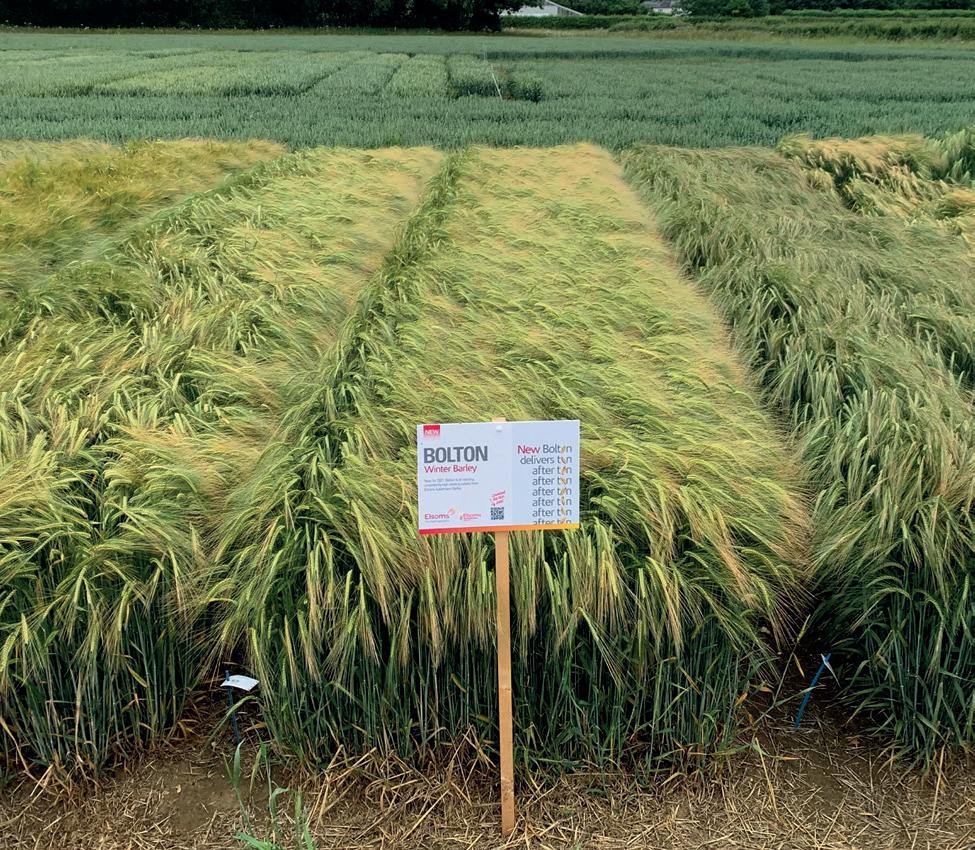
No-brainer
“Having achieved a very high yield with Lightning last year, the decision to go with Bolton seemed a no-brainer. We drilled 16ha of the crop on 1 October across three fields of mainly Grade 2 land varying from light silt to heavy clay soils.”

As with Lightning, Bolton showed excellent early vigour, competing and tillering well to smother blackgrass. With no major weather issues or hard frosts to knock it back, the crop was already at the 4-5 tiller stage as it went into winter.
Following a mild winter, Mr Booth applied 300kg/ha of fertiliser in two splits, one on 24 February and the next on 27 March – the same application date as a T1 spray in a four-spray fungicide
program.
Taking a belt and braces approach, he built the spray programme mainly around pyraclostrobin + fluxapyroxad, chlormequat and prothioconazole with trinexapac-ethyl applied as a growth regulator.
Low-pressure year
for winter barley variety Bolton. Similar reports have come from other farmers who have found the AHDB-recommended
of built-in resistance to barley yellow mosaic virus (BYMV), says Mr Goodwin. “With an untreated yield of 86%, it’s also ahead of many
proach would have been fine given that Bolton was very easy to manage. As we went through the spring and into early summer we saw no disease signs.

“A small amount of brown rust in winter wheat didn’t appear in the Bolton crop at all. The only negative I recall was a slight yellowing of the crop after heavy rain in March and April – but that sorted itself out once we got into May.”
The Bolton was harvested on 26 July. Average yields were over 9t/ ha with grain samples looking very good, says Mr Booth – although he concedes that the variety wasn’t really tested when it came to disease resistance this year.

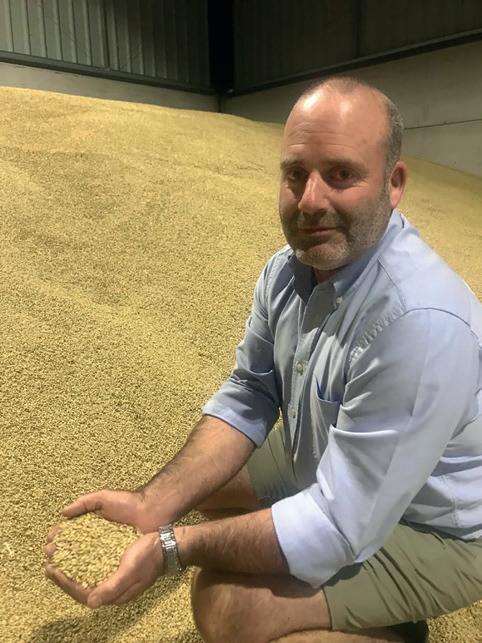
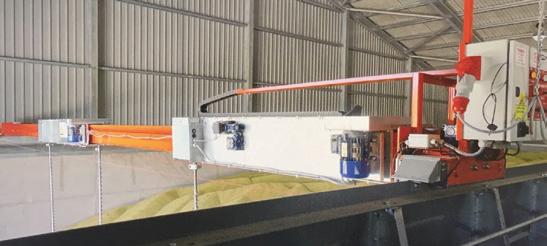
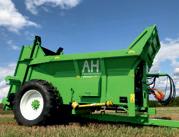
“It looks robust, certainly standing well during heavy rain and windy conditions prior to harvest, giving the impression that it’s resistant to lodging.
“It produced lots of stiff straw with no major difference in yield






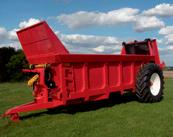




two years, it’s certainly realistic to view the variety as one of the most consistent performers on the current recommended list.”
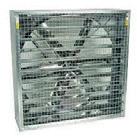


Better blight forecasts are now readily available for potato growers thanks to the new Syngenta MyField app.
The app provides growers with instant access to weather information and agronomy decision support tools in a single easy-to-use digital platform tailored to each field.

It includes Syngenta’s BlightCast facility for potato growers, which works alongside the Quantis Heat Stress Alert tool – helping farmers and agronomists optimise the timing of biostimulant applications in potatoes, sugar beet and maize crops.
Growers and agronomists with Android or Apple smartphones can download and register the app for free. Doing so opens access to detailed local weather information and warning risks linked to aid agronomy decisions.

“By adding in individual fields or cropping blocks, using the integrated Google maps tool, all the information received will be tailored precise-
ly to the specific location and crops,” says system developer Ed Flint.
Potato growers and agronomists can receive the latest BlightCast in formation with up to 14 days warn ing of conditions that are conducive to disease infection and development – helping to fine-tune in-season blight protection to specific pressures.
New for the 2023 season, the BlightCast App now enables users to personalise the parameters that trig ger a near miss threshold, to tailor the system’s sensitivity to specific situa tions and their own risk requirements.
The full Hutton period warning remains fixed at nationally recognised humidity and temperature conditions. “Risks are clearly defined with an easy to interpret green, amber or red alert to aid decision-making,” says Mr Flint.
A heat stress alert tool notifies growers when heat events are forecast to damage crops – in time to take preventative action. Quantis application
prior to heat events in potatoes, sugar beet and maize can protect crops, adds Mr Flint.

As well as live on-screen updates, growers and agronomists can receive email alerts of impending blight risk or impending heat event periods. Growers should use the alerts in conjunction with Syngenta Spray Assist to optimise application timings.
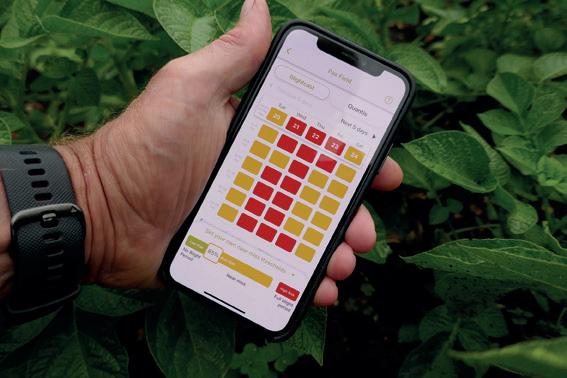



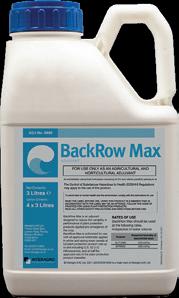






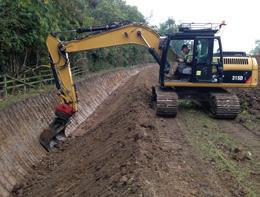

DART – A significant step forward in DSV’s reliable, simple to grow, high output oilseed rape varieties. • High yield and impressive oil content. • TuYV protection with good tolerance to Verticillium wilt. • HarvestMax technology to minimise pre harvest seed losses. • Low biomass variety for early maturity and easy harvest.

More genetically diverse cere al varieties could help grow ers tap into a growing niche market – and make their businesses more resilient.
Growers have a commercial and eco nomic imperative to identify new mar kets for heterogeneous grains, listen ers were told at the National Organic Conference. The event took place ear lier this summer at Green Acres Farm, near Shifnal, Shropshire.
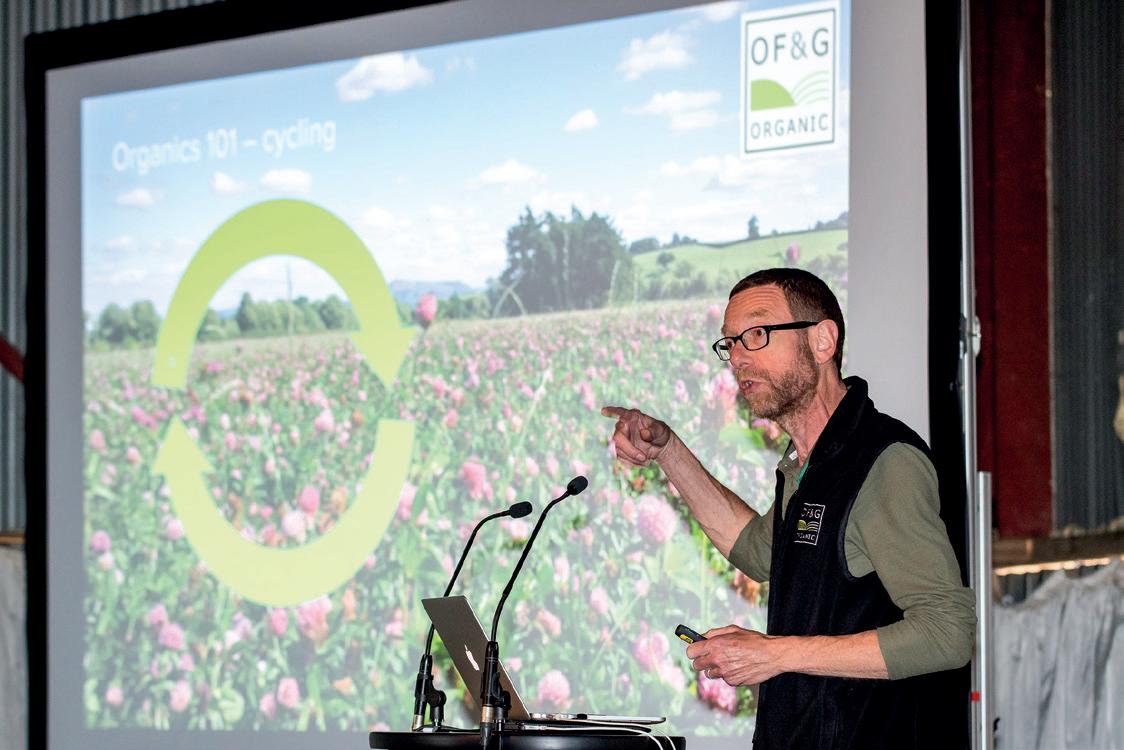
“In the artisan bakery sector there’s a much higher appreciation of flavour and provenance,” said Steven Jacobs, business development manager at or ganic certification body Organic Farm ers and Growers and co-founder of the UK Grain Lab.
In the quest for profit and produc tivity, many farmers still favour highyielding mass market varieties. This has its advantages, but Mr Jacobs said it was also contributing to lower ge netic diversity in cereals.
The UK Grain Lab is a group of scientists,plant breeders, millers, bakers and farmers who grow more diverse “low impact” grains which rely less on external inputs than conventional commodity-based varieties.
Mr Jacobs said: “Although the yields may not match those of some of the varieties at the top of the AHDB Recommended List, genetically diverse crops require fewer synthetic inputs resulting in comparable profit margins.”
“Collaboration is vital to increasing understanding of which low impact varieties perform best, said Mr Jacobs. “We want people to support a much more biology-based and more diverse food and farming system.”
Above: Delegates inspect trial plots at Green Acres Farm, near Shifnal, Shropshire, which hosted the National Organic Conference earlier this summer.

Below: Steven Jacobs speaking at the conference.
Plant breeder Edward Dickin, a lecturer at Harper Adams University, believes there is a strong incentive to develop non-commodity varieties.
“From a scientific perspective, the problem with the single variety wheats that dominate the market is the selection pressure for disease is increased,” Dr Dickin told the conference.
Higher appreciation
“Popular varieties can breakdown very quickly as their uniformity makes them quite vulnerable.
“So although high yielding, they’re more susceptible to new pathogens as those evolve, which puts the wheats at a major disadvantage.”
Continued overleaf
Continued from previous page
“In seed breeding trials here and elsewhere, our objective is to have crops that simultaneously evolve with the pathogens. Ultimately, it’s all about maintaining balance.”
There are thousands of wheat varie ties worldwide – but only about 50 are grown commercially in the UK. The push for output has meant crops have lost three-quarters of their genetic di versity since 1900, said Dr Dickin.
This has affected crop resilience. It has only been in the last two decades that a small number of people have start ed to pioneer Composite Cross Popu lations and re-establish genetically di verse plant varieties.
This work has been carried out in the EU under a special arrangement granting permission for organic grow ers to swap heterogenous cereal seed. The UK Grain Lab has been working behind the scenes so UK growers can also swap seed.
It has submitted an advocacy paper asking Defra to adopt a more progressive stance with heterogeneous plant material to ensure UK seed breeders
tive approach and a totally scalable model. Its a growing community in every sense.”
Dr Dickin believes a key advantage of HetroGen is that it enables farmers to make informed decisions. Grow-
ers can work with the seed breeders to find what works best on their land, he added.
“The wide range of differences found in genetically diverse seed allows farmers to adapt their crops to thrive in their local climate and provide natural protection against disease or pest outbreak,” he said.
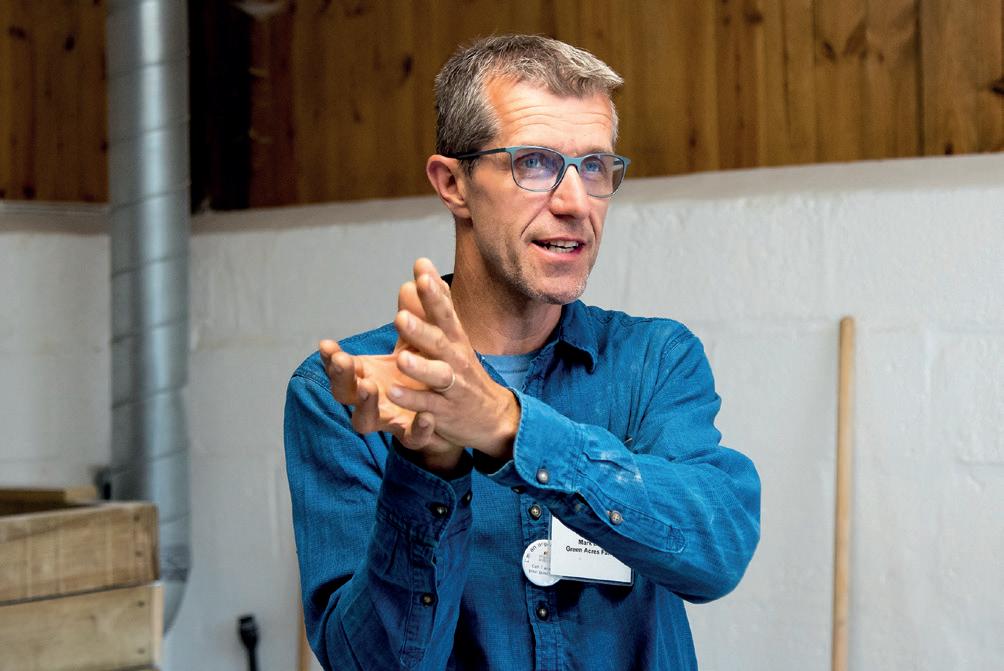
John Turner has been growing genetically diverse wheat since 2017.
The role of genetic diversity in arable farming was a key focus at this year’s National Organic Conference, which took place

Organised by Organic Farmers and Growers (OF&G) the event was hosted by Mark and Liz Lea at Green Acres Farm, near Shifnal, Shropshire. This summer, their diverse cropping
Crops include some of the oldest wheats recorded in Britain. They include the ORC Wakelyns Population, a project led by Professor Martin Wolfe and the team from the Organic says: “I’m genuinely proud to be organic and pleased to have moved away from commodity food production and instead developed relationships with people who value our products and the way in which we
“Everything is grown with the end user in mind and sold directly to millers or bakers. As a result, we’ve added value to
“Fewer inputs can generate similar profits
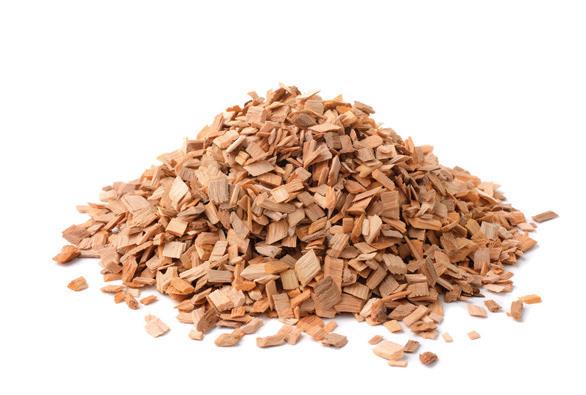

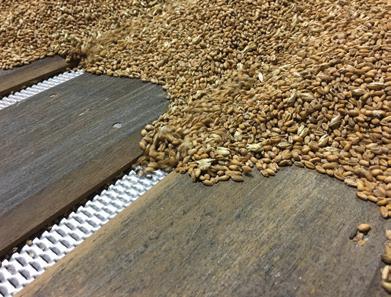





Flach
Email:

Seed breeder Grainseed says small amounts of new conventional oilseed rape Pi Pinnacle are available for planting this autumn.

Yielded 103% of controls, Pinnacle – or Pi 41.7 – is the highest yielding conventional variety selected as a candidate for the Agriculture and Horticulture Deveopment Board’s 2024 Recommended List.
Grainseed general manager Neil Groom says: “A variety such as Pinnacle offers growers peak yields and peak profits. We have a small amount of seed for this autumn if growers would like to try it. We have high hopes for this variety in the future.”
Pinnacle was bred by independent breeder Mike Pickford, who focused on keeping the plant green and building yield at the end of the season. He increased yield by selecting a high number of pods per plant, a high number of seeds in a pod and larger seeds.


Bred in the Cotswolds, Pinnacle is fully adapted to UK conditions. It has good agronomic characteristics with similar vigour and biomass to many hybrids. It also shows rapid growth during the stem elongation phase, helped by seed treatments.
The variety scores 9 for lodging resistance, 8 for stem stiffness, 7 for light leaf spot and 6 for phoma. It has good verticillium resistance and maintains clean green stems when ripening – encouraging efficient photosynthesis during the ripening grain filling process.
Medium to late flowering reduces the risk of flower loss due to late frosts but Pinnacle is still medium when it comes to grain maturity, allowing crops to be harvested before the first wheats are ready to cut.
“If growers are looking to reduce costs as much as possible, growing a











We have high hopes for this variety
Pinnacle was bred in the Cotswolds by independent breeder Mike Pickford.
high performing conventional variety can enable you to do this,” says Neil Groom, general manager for Grainseed.

Harvest timing
Pinnacle has large seed and is packed in bags containing 2 million seeds with Integral Plus and Sylas for optimum establishment, says Grainseed.
The top hybrid in 2023 is Turing which has a yield of 106%.
With a good hybrid costing £230 per 1.5 million seeds, equivalent to 3ha sown at 50 seeds/m², a grower can by 2.2 bags of Pinnacle for the same price, which is equivalent to 5.5ha at 80 seeds/m², explains Mr Groom.
“There is plenty of moisture in the ground at the moment, so drilling rape will surely have a positive outcome. Most farms are now clearing all their wheat crops and the balers are tight behind the combine allowing rape to be drilled now.
“I am advising growers to drill companion plants with their rape and use placement fertiliser to aid early growth.”
Origin Fertilisers is the latest farm supplier to join the Green Tractor Scheme – helping farmers dispose of plastic waste sustainably and efficiently.
Founded in 2020, the schene aims to ensure all agricultural plastic waste is recycled by 2030. A growing group of environmentally focused agricultural businesses have joined the collective to encourage farm plastic recycling at over 80 locations.
It does this by collaborating with farmers and providing best practice advice regarding the separation and presentation of plastic waste. It also encourages the industry to remove unnecessary plastics from the supply chain.
Origin Fertilisers has already made significant steps to reduce the plastic content in its fertiliser bags. By working with its suppliers, all Origin 600kg and 1000kg bags now contain 30% recycled material.
Origin marketing manager Mandy McAulay says the scheme will mean a more sustainable approach to waste.
“We want to be a leader in making a positive change regarding plastic recycling and supporting farmers and the wider industry.
Origin is now developing innovative products that are more environmentally friendly while improving soil fertility and nutrient use efficiency.

• No cause for complacency
Late blight outbreaks are springing up in potato crops after the wet weather continued into August following a dismal July.
The UK had 170% of its usual July rainfall, making it the wettest July since 2009 and the sixth wettest on record, according to the Met Office. Predictably, this has led to a significant rise in blight outbreaks nationwide.
The Fight Against Blight monitoring service – run by the James Hutton Institute – has reported 120 crop outbreaks to the middle of August. This puts 2023 on track to be a highpressure year alongside 2019, 2012 and 2007.
Outbreaks are spread around all potato-growing regions, with typically drier areas like East Anglia having no respite. says James Hutton research leader David Cooke. “It has been a challenge to keep on top of the samples coming into the lab.”
Dr Cooke isolates and characterises each sample as it arrives, also undertaking a DNA analysis. The aim is to spot any changes in the blight population as the season progresses so spray programmes can be adapted based on the present genotypes.
The big concern is the EU-43-A1 genotype, which is resistant to the carboxylic acid amide (CAA) group of fungicides, including mandipropamid. So far this season, it has not been found so far this season – but there is no cause for complacency.
That does not mean the bight risk is low because on of the dominant strains is 36-A2. Present for a number of years, it is extremely aggressive and can pose a serious challenge if it takes hold in a crop.
“Trying to firefight blight is very difficult, but the chemistry must con-
tinue to be used wisely, especially concerning the longer-term risk of EU-43-A1,” says Dr Cooke.
“We do not want other actives struggling under high pressure being misused. It is tempting for growers to keep using the products that will give them the best control, but they must use a range of fungicides.

“The good news is that the canopy has finished growing, so at least when a fungicide is applied, it protects all the leaves for a period. I would encour age growers to keep an eye on the low er canopy to ensure there is no resid ual amount of blight there.”
This could be the case following frequent heavy rainfall, which will spread the disease down the canopy. The worry is that the conditions have also suited tuber infection from any foliar blight established in the crop.
Lower temperatures will encour age the production of zoospores, and combined with soil moisture, there is a high risk that if foliar blight remains unchecked, it will quickly become an issue in the soil, says Dr Cooke.
By now, most crops are at or beyond the canopy complete stage, says UPL potato technical expert Geoff Hailstone. “When outbreaks are found in the field, the priority must be to clear these up and stop them spreading as soon as possible.”
Where this is the case, Mr Hailstone says a tank mix should include Proxanil (cymoxanil + propamocarb).
“Cymoxanil is known to be one of the few actives with kickback activity and has a very low risk of developing resistance. Propamocarb has strong anti-sporulant activity, good movement in the plant and is only active in the carbamate resistance group.
“When tank-mixed with a protectant fungicide such as cyazofamid, Proxanil strengthens the activity and gives excellent resistance management. Where blight appears in the crop, there should ideally be two closely timed sprays, while adhering to label intervals.”
If foliar blight is active in the canopy, especially if conditions are favourable for zoospore production, then the
The priority is to stop outbreaks spreading, says Geoff Hailstone.
risk of resistance can be particularly high. Mr Hailstone recommends including mancozeb for resistance management and to protect uninfected leaves.
Although mancozeb only has protectant activity, it still has a role in controlling outbreaks when mixed with curative products. Mancozeb is sold as a straight product in Manzate 75WG or formulated with cymoxanil in Nautile DG (cymoxanil + mancozeb).
“Hopefully, the weather turns more settled until harvest and growers can keep on top of disease in their potato crops – but they must maintain blight programmes until the foliage and stems are dead.
“Where a grower knows that foliar blight has been present in the crop, they should study the susceptibility to tuber blight of the variety they are growing and prioritise harvest accordingly,” concludes Mr Hailstone.
With soil moisture levels high this summer, growers must use good quality slug pellets applied accurately to control burgeoning slug populations.
That is the advice from Adama molluscicides technical specialist Andy Bailey, who says equipment must be properly calibrated to ensure accurate pellet application.

“Wet conditions throughout much of June and July have provided ideal conditions for an extended breeding window for slugs which means populations are already high, with reports of attacks on young oilseed rape crops coming in thick and fast.
“In those parts of the UK where the unsettled weather has continued into August, slug populations could be even greater, making it all the more vital for growers to apply good quality slug bait on time and accurately.”
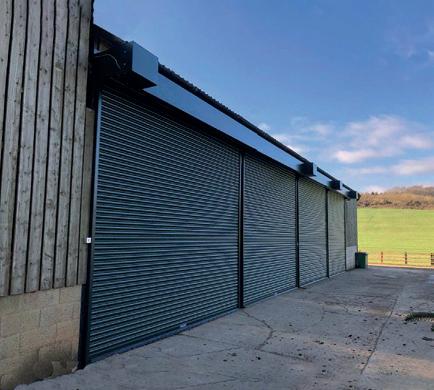

Growers are reminded that mollus-
cicides should only be used once populations have reached the appropriate damage-risk threshold per trapping point – and only if weather conditions are favourable.
“Applying slug pellets immediately prior to heavy rainfall can lead to their rapid degradation, especially if the pellets are of a poorer quality,” says Mr Bailey.
Threshold point
“Regular assessments to evaluate slug populations is the way to go, with spreading equipment calibrated and ready to be deployed as soon as the threshold point has been reached and a period of favourable, settled weather prevails.”
The National Sprayer Testing Scheme says applicators should be calibrated in line with the manufacturer’s recommendations before they are used and then during the season.
“Pellet spreaders and spinners should be positioned at an appropriate height for the machine on which they are mounted – typically 110cm above the ground for quad-mounted applicators,” says Mr Bailey.
“They should also be operated at a sensible forward operating speed of around 12kph to ensure slug pellets are applied evenly and consistently across the spreading width.”
A stable and secure feedstock supply is fundamental for anaerobic digesters, says Lucy Hopwood (right), of strategic business consultants NNFCC.
As the development of larger plants continues, quality feedstock is becoming harder to secure, so a mixed diet of food waste, agri-waste or sustainable crops offers a practical, technical, and economically viable solution,” she explains.
This helps mitigate risks and maximise returns – but the key to
growing crops for AD is to ensure they are sustainable, so minimising inputs while maximising yields is vital, says Ms Hopwood.
“I always advise growers to do what they do best, and to grow the crop that works best for their location, soil type and farming system.
“In an increasing number of cases now this is hybrid rye, which can be drilled and harvested early. This helps to spread the workload on farm, while requiring fewer inputs. It also achieves more consistently high yields than many other crops.”
Farm-sourced feedstock helps AD plants maintain their operational stability and improve performance, says Ms Hopwood.
“I can see the cropping area for high energy crops such as hybrid rye and maize continuing to expand as AD capacity continues to grow.”

Timing and accuracy are important

Twin hold roll pin blade removal system and backward leaning air borne upper blade for trash lift and ease of trash flow
Seed depth tail 40mm deep holding the seed at correct depth and placing seed on either side of seed terrace
for exacting maximum returns from SFI without losing crop output
SOIL SURFACE
Triton launched its unique deep soil engagement direct drill in 2018 to give plough based yields from direct drilling. 6 years later we are consistently achieving higher yields from the Triton than from ploughed trials on our own land. The Triton is the only all weather seed drill on the market that gives the flexibility to grow maximum profit autumn sown crops whilst reducing blackgrass from late drilling... several manufacturers are now also claiming all weather capability... if these are false claims then the farmer’s new approach will be thwarted.
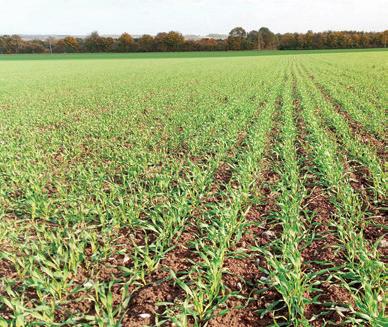

Downward facing upper blade does not hook grass weed seed up from below stale seed bed and field surface
Triangular tungsten tiles for reduced draught and soil disturbance
draught and soil disturbance
SOIL SURFACE
Drilling at 40mm depth
Downward facing upper blade holds field surface in place minimising soil eruption in the stale seed bed
Drilling at 40mm
Downward facing upper blade surface in place minimising soil eruption in the stale seed bed
14cm deep
lower blade takes blade deep below ground for air drainage and rooting
Buying a blade drill is now an open and shut case. Why? Because only the Triton drill has a slot closer
lower blade takes blade deep below ground for air drainage and rooting
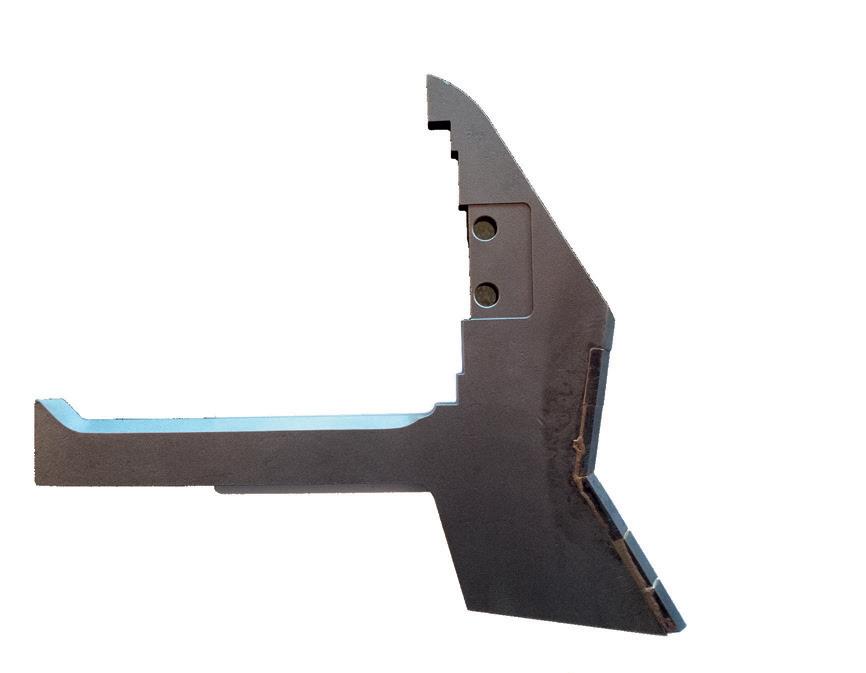
The ‘must have’ seed drill
The wet summer has provided good conditions for oilseed rape establishment – but growers who drilled early should prepare for high slug pressure.
That’s the message from independent agronomist Steve Cook who advises growers to put out slug traps at the time of drilling – and be primed to apply pellets if there is any evidence of slug activity.
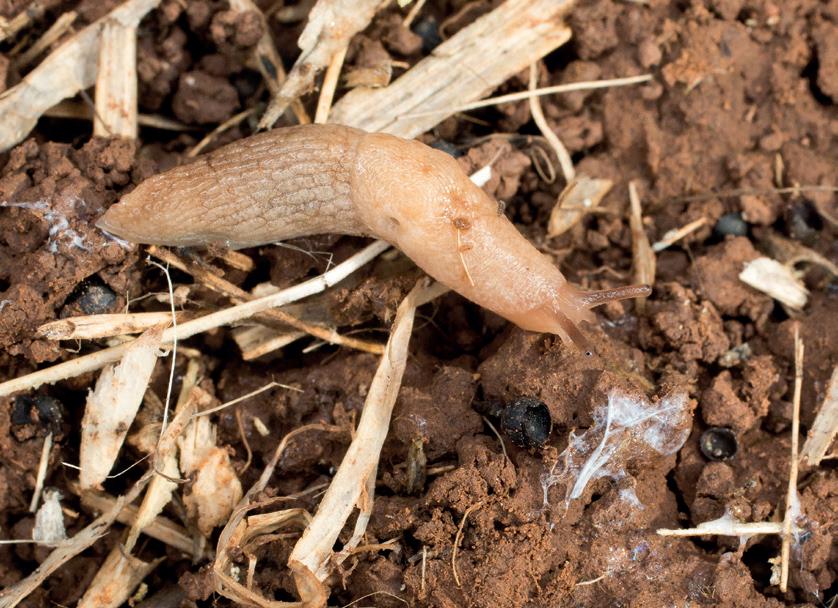
For most situations, regular sized pellets should give good control levels. But where pressure is particularly high, an initial application of a mini ferric phosphate pellet product – such as Menorexx – could be beneficial.
Smaller pellets provide a higher number of baiting points. But they are less durable in the wettest conditions, so growers should be prepared to follow up with another application shortly afterwards if required.
Seed rates also effect successful crop establishment. Anyone establishing crops in early August should use no more than 30 seeds/m2 for hybrids and 40-50 seeds/m2 for conventional varieties, says Mr Cook.
Independent crop consultant advisor Andrew Wells says he is expecting “scary” levels of slug pressure in early planted oilseed rape crops, especially where cereal straw was chopped rath-
Met Office figures show that the UK had 140.1mm of rain in July – the sixth highest total since records began in 1836. A succession of low pressure systems saw long periods of damp and windy weather.
For those who did drill early, getting on top of slugs as soon as the crop is established iscrucial. Alongside trapping to gauge pressure, it could
Grey field slugs are a common sight in some rape fields.
[Photo: Certis]
Accurate application is essential, which means using a good quality, durable pellet, such as Sluxx HP, and an applicator capable of spreading evenly to the chosen spreading width.
“Every year I see gaps in the crop that are caused by inaccurate spreading, so it’s important to make sure that applicators are actually spreading pellets to the desired distance, rather than just going off the settings in the book,” says Mr Wells.
Resilient farming systems will be a key topic for this autumn’s CropTec Show, which takes place on 29-30 November at Stoneleigh Park, Warwickshire.
Now in its 11th year, CropTec combines an in-depth seminar programme alongside stands with industry exhibitors and the opportunity to try out some of the latest equipment in arable farming.
Opportunities for learning include the chance to earn BASIS and NRoSO points. Visitors will also have the opportunity to test drive sprayers.
Event director Verity Hyland said: “We are busy curating a seminar programme which will address the current opportunities and challenges for UK arable production and specifically how to navigate change to cultivate resilience.
“This is an exciting opportunity for visitors to CropTec being able to jump in the hot seat and try a range of cutting-edge sprayers in one venue. Visitors wishing to take part simply need to speak with the individual manufacturers on the day to organise a time-slot.”
Tickets are free and available now at croptecshow.com.

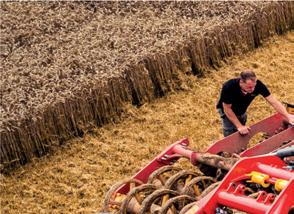

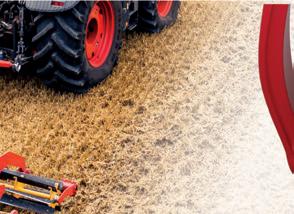

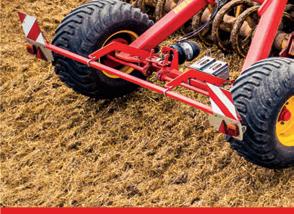
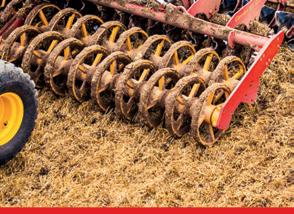




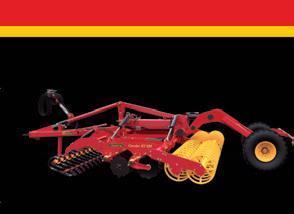


























































































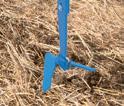

Preparation for drilling wheat and barley crops this autumn could include decisions about nitrogen efficiency – not just crop emergence and establishment.
With growers focused on using fertiliser more efficiently, modern endophyte seed treatment technology means plants can obtain some of their spring nitrogen from the air, says Syngenta field technical manager Jonathan Ronksley..

Crucial elements
“Factors such as cultivations, seed rate, drilling date and protecting against establishment diseases with a fungicide seed treatment remain crucial elements in establishment decisions,” says Dr Ronksley.
“But farmers are also looking to use nitrogen fertiliser more efficiently and farm more sustainably – and for the first time this autumn we have nitrogenfixing endophyte seed treatment Nuello iN available for winter wheat and winter barley seed.”
Nuello iN contains two nitrogen-fixing bacteria – Pseudomonas siliginis and Curtobacterium salicaceae. These enter the plant via the developing root before colonising plant shoots and fixing atmospheric nitrogen.
Yield benefits
“They provide the plant with organic nitrogen and ammonium and are ‘always on’ throughout the whole season,” says Dr Ronks ley. “This has the potential to sup plement traditional fertiliser.”
Nuello iN seed treatment de livered a yield benefit equivalent to applying up to an extra 30 kg N/ha in four UK replicated field studies examining nitrogen fer tiliser dose response curves in winter wheat last season, says Dr Ronksley.
This was echoed in 14 Adas split-field farm trials across the UK. Winter wheat treated with Nuello iN received a 30 kg/ha re duction in its standard nitrogen dose – but still maintained a sim ilar yield to winter wheat receiv ing its full dose.
With yields averaging about 10.8t/ha, says this equated to Nuello iN giving a 3:1 return on investment. On light or shallow land sites, Dr Ronksley says using Nuello iN with a 30kg/ha nitrogen reduction gave an even bigger 5:1 return on investment.
“This makes sense as these types of soils are often associated with lower availability of soil residual nitrogen,” explains Dr Ronksley.
Bigger average yield gains from Nuello iN were found on light or shallow land sites or second cereal sites in replicated trials where a standard 100% nitrogen dose was applied. Yield benefits were also found in hybrid winter feed barley.

“It’s always important to consult a FACTS qualified adviser for advice and guidance on nitrogen applications. But there are sever-
al scenarios where we see a role for Nuello iN as part of an integrated fertiliser strategy.
“These include winter feed wheat and winter feed barley where a decision has been made to reduce in-season synthetic nitrogen, and in winter wheat and winter barley where no reduction in synthetic nitrogen will take place but growers are looking to enhance yields.
Nuello iN may be particularly relevant on sites where soil nitrogen is limited. This could include light, shallow or nutrient-deficient soils; a second cereal position; or where nitrogen is applied late or in dry conditions.
“Farming is all about risk mitigation and this can help growers with that,” says Dr Ronksley. But it is not recommended to reduce nitrogen on milling wheat or malting barley, he adds.
“It is still important when using Nuello iN that it is co-applied with a suitable fungicide seed treatment, such as Vibrance Duo, to maintain protection against establishment diseases. Much of our trial work has been with Nuello iN co-applied with Vibrance Duo.”
In addition, Nuello iN has been observed to enhance early rooting, with an increase of 20% across three winter wheat and winter barley trials. Enhanced root development is associated with improved nutrient scavenging from the soil.
Grassweeds are again a big talking point for arable growers –with some fields under significant pressure before autumn drilling.
Blackgrass remains the dominant issue in many eastern counties – with Italian ryegrass and brome increasing nationally. This has prompted more growers to reach for the ‘reset’ button and plough-in stubble this autumn.
Some growers blame the shift to direct drilling and minimal tillage systems for rising grassweed pressure. And it is true that ploughing has long been an effective tool in the armoury alongside herbicides.
But experts at agronomy company Hutchinsons say the reasons are often far more complex. They include a combination of factors – from inappropriate cultivation choice and timing to poor herbicide strategy and unpredictable weather.
There are three important reasons why some growers have seen disappointing grassweed control this year, says Hutchinsons technical director Dick Neale (see panel). Understanding these reasons is key to moving forward, he adds.
Bromes and Italian ryegrass are also increasing concerns in many areas. Great brome has been particularly noticeable in some areas, with a rise in meadow and soft brome perhaps an unintended consequence of cultural

Meadow and soft brome need ultraviolet light for up to a month to become viable, so growers who have used stale seedbeds for blackgrass control may have unintentionally buried brome seed, enforcing dormancy.
But Hutchinsons technical support manager Cam Murray says cultivation timing – rather than the specific type of cultivation itself – influences how certain bromes survive.
Combating other grassweed shouldn’t be overlooked, with Italian ryegrass is one of the biggest threats given its “monstrous potential” to rob yield.
“With just one plant per square metre relating to a 1% yield loss, it places itself as one of the premier grassweed in relation to yield loss.”
Italian ryegrass germinates allyear-round apart from July. Ryegrass too will be a challenge for some growers this year because the wet and mild winter and spring favoured protracted germination and growth.
Weather is a key factor when it comes to grassweeds, says Dick Neale.

In 2021 and 2022, dry conditions in summer and early autumn reduced the germination of volunteer grassweeds before drilling. This resulted in less effective stale seedbed control two years running.
In 2023, soil moisture is generally much higher, so stale seedbeds should be more effective this autumn. With sufficient moisture, rolling stubbles twice can encourage weed seed germination – and avoids the risk of creating an over-fine seedbed.
Dry seedbeds restricted the performance of residual herbicides in the last two seasons. Residuals need sufficient moisture to keep the active dissolved in solution and taken up by emerging weeds.
Again, more soil moisture this year should allow for better performance, but pay attention to seedbed quality, moisture/post-application rainfall, pre-emergence timing – within 2448 hours of drilling – and application coverage to maximise efficacy.
Early-sown winter cereals are under particularly high ryegrass pressure
Below: Blackgrass has been more prevalent in many fields this year. Continued
Where the focus has been on stacking pre-emergence chemistry, this has generally meant fewer spring residuals to catch spring-germinating grassweeds.
The impact of this has particularly noticeable where germination is protracted, due to the weather, or natural characteristics, such as Italian ryegrass.
All three factors were compounded in 2022, when stronger wheat prices encouraged a higher proportion of wheat plantings last autumn. This meant more growers started drilling earlier, when conditions were still dry, with insufficient opportunity for stale seedbeds.









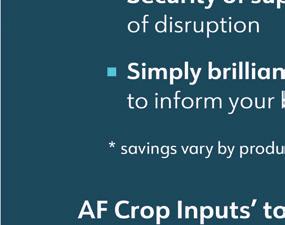


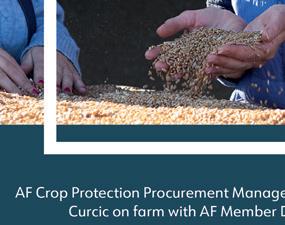




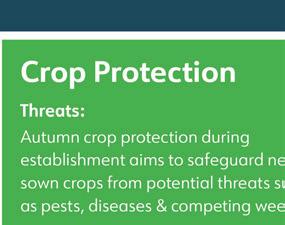



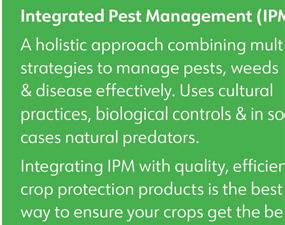



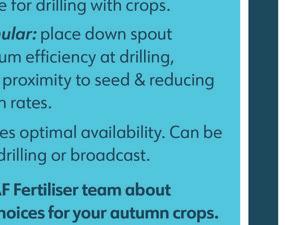











Continued from p26
and delayed drilling.
This isn’t always possible in areas where field conditions can deteriorate as autumn progresses. Later-sown crops also need higher seed rates to avoid establishing thin plant stands that are more likely to favour grassweeds.
Managing weeds is a numbers game, says Mr Neale. That’s because even just a few surviving plants can soon have a dramatic impact on seed return and weed pressure in subsequent years, he explains.
“If a blackgrass head population is even noticeable in the field, it will generally be at around 100 heads/m2, so has the ability to deliver 10,000 seeds/ m2 back to the soil. That amounts to one hundred million seeds/ha - the numbers are phenomenal.”
Trials clearly show that 90% control of plants in the autumn only equates to 57% control of heads in the following May, because surviving plants are genetically stronger, with the ability to resist herbicides, and produce more tillers.
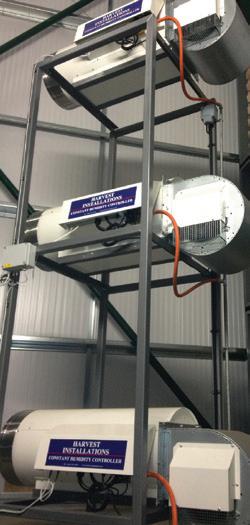


“Single plants carrying 25 tillers are now becoming commonplace, compared to 9-10 tillers per plant 20 years ago.”

Preventing seed return is the ultimate aim, but this requires an understanding of the types and species of weeds present in individual fields, their ecology, and resistance status, in order to determine the most effective control strategies.
This is particularly evident for brome, as the maturity profile or innate dormancy of barren brome is different to rye or soft brome, and shal-



low tillage timing will have totally different outcomes for either species, explains Mr Neale.
Placing soft brome into darkness at shallow depth immediately post-combining will lengthen seed dormancy and prevent any growth for control before autumn establishment.

In contrast, barren brome will be “ready to go” straight after the combine. It will grow for spraying off prior to autumn drilling. Soft brome also has an in-built delay, so a spring germination period must be built into control strategies.
Ploughing buries seed beyond germination depth, so can be an effective “reset button” for many grassweeds. But it must be done well, and growers should recognise that what is ploughed down now, will be ploughed back up in subsequent years.
That means ploughing is only part of the answer. Sequencing residual herbicides is important to counter protracted germination of ryegrass, so growers should consider how cultivations may affect field access in late autumn and early spring.
Brome is an increasingly serious challenge for many growers.
Managing weeds is a numbers game
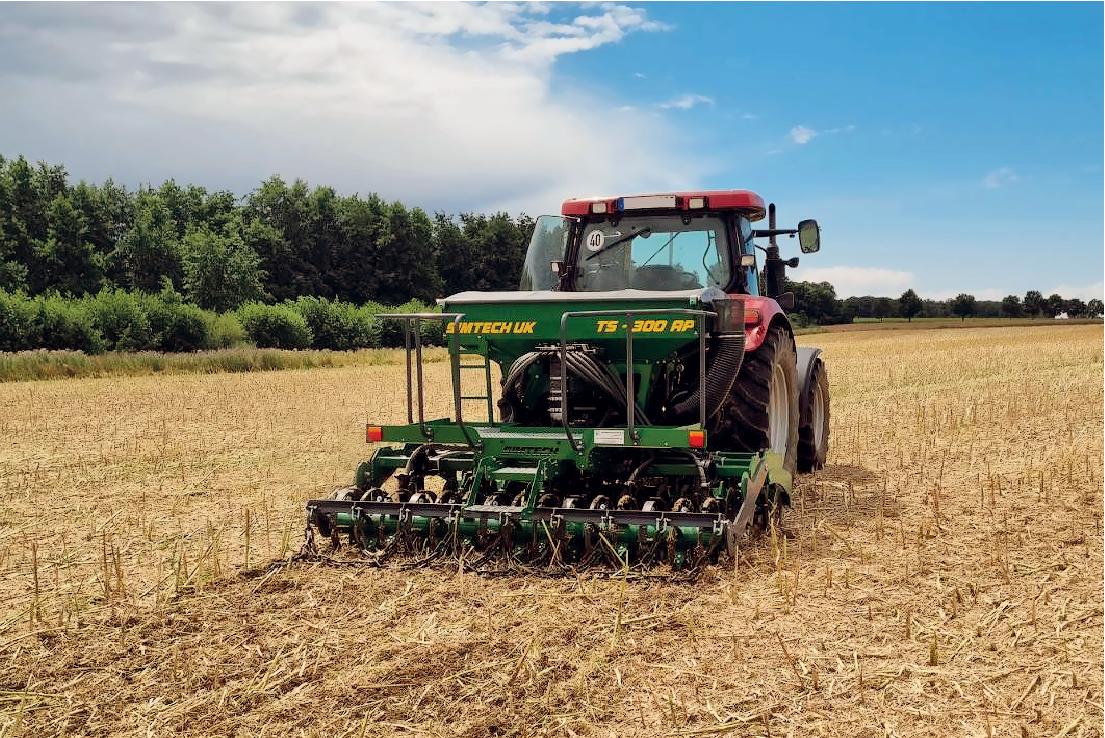
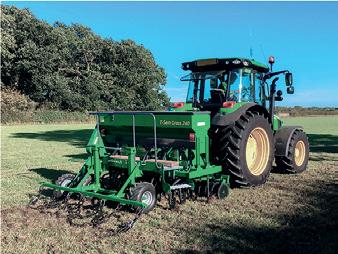
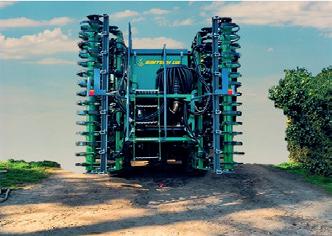








































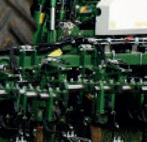


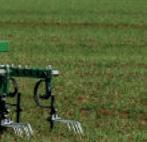
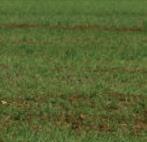












Organisers of this month’s Tillage Live event say their Knowledge Trail will return to the show on Thursday, 14 Septem ber at Atherstone, Warwickshire.
With BASIS and NRoSo points up for grabs, the Knowledge Trail is seen as is must do activity for many dur ing the event. There will be five sta tions to visit this year – with differ ent themes and areas.
1. What are your soils telling you?
– NIAB | Stand S5 NIAB’s soil specialists will be on hand in the soil pit, looking at the host farms soil structure and offering support to growers to identify issues and ways to improve soil health.
2. Soil health – Agrovista | Stand S8 Agrovista UK is a supplier of agrono my advice, seed, crop protection products and precision farming services. Working in partnership with other arable companies, it aims to help customers manage their businesses more efficiently and profitably.
Experts from the company aim to bridge the gap between science and practical farming, providing practical solutions to build good quality soils with appropriate structure, chemistry and biology.
By combining expert knowledge in cover crops research and comprehensive soil health reports, Agrovista aims to help growers focus on all aspects of soil health – managing soils for the benefit of long-term soil resilience and farm profitability.
3. Best practice for reducing ammonia emissions – NFU Arable | Stand S11 Worcestershire and Warwickshire NFU County advisors Emma Hamer and George Bostock will be available on the NFU stand.
They will be promoting the responsible use of urea fertilisers as a way to reduce ammonia emissions. Defra’s preferred option was an outright ban, so the NFU worked with other stakeholders to develop an alternative option to keep access to urea. This involves an industry-led approach to promoting and encouraging best practice for substantially reducing ammonia emissions from agriculture by 2030, particularly from the use of urea and liquid UAN fertilisers. It includes mandating the use of urease inhibitors with urea and UAN fertilisers at certain times of the year, with compliance assessed through Red Tractor assurance schemes.

Machinery maker Lemken has launched an innovative new cultivator onto the UK market.
Available in mounted and semi-mounted versions, the Karat 10 three-beam cultivator has been designed to be extremely low-draught with symmetrically arranged tines.
This is particularly important when using the cultivator with track guidance systems. At the same time, it ensures intensive mixing. Other innovations include widened wing shares for shallow cultivation.
All shares are optionally available in carbide, with narrow shares used for deep cultivation and DeltaCut shares can be used for ultra-shallow cultivation.
4. Simple solutions to reducing compaction – Bridgestone | Stand S14
Bridgestone are be on hand with a suite of simple solutions to reduce the load applied to soils. The goal is to improve soil health and yields, reduce costly eradication afterwards and improve the bottom line of the farm business.

5. Cover Crops: what, why, where and when? – Kings Crops | Stand S19
Kings Crops is the specialist crops and environmental land management division of Frontier Agriculture, with its own expert team to support farmers. It provides land managers with advice and seed for cover crops, game cover, forage and conservation mixes. The Kings Crops team combines its expertise and solutions with the crop production services of Frontier and digital tools from sister company SOYL analysis.
The goal is to improve soil health
• Make most of available fodder
• Take action sooner rather than later
• Look for alternatives
feedstuffs
Livestock producers are being advised to assess their forage stocks ahead of an expected se vere shortage this winter.
A wet spring followed by a mixed summer has left many experts fore casting a shortfall of forage stocks on many farms. Farmers should take steps now to secure any much-need ed supplies, says Lisa Hambly of Mole Valley Farmers.
“There is a window of opportunity right now that farmers can take to ad dress any forage shortages. Have those conversations and think about opti mising what you are doing and do it now rather than wait until the winter when everyone else will be looking.”
Shortages are likely to follow the second poor growing year in many areas, says livestock nutritionist Kerensa Hawkey. “Stocks are tight anyway and people fed more from their reserves across the winter, so there’s just not the spare forage on farms.”
The wet spring and an extremely dry start to the summer before the wet July took its toll. Maize, in many areas, had a difficult start, with experts predicting yields could be down by as much as 30% on some farms.
Both advisers stress the importance of farmers accurately measuring their clamps and forage stocks, the amount of stock that needs feeding and calculating a realistic view of how long forage will last.
Farmers can take various options to overcome shortages. But Dr Hawkey says: “This must take into account all stock from dry cows, milking cows, youngstock, any sheep or other animals that eat forage, too.”
Strategies include looking for opportunities by walking the fields. Ms Hambly says: “Warm soils and moisture provide good growing conditions, so it could provide an ideal opportunity to establish grass or a brassica. Be prepared to put a grass crop in after maize. You can just drive through with the seed – you don’t need to plough.”
Farmers could also consider outwintering to feed youngstock enough to maintain growth rates and reduce any metabolic diseases at calving. “Youngstock are the future of your herd, so you need to look after them.”
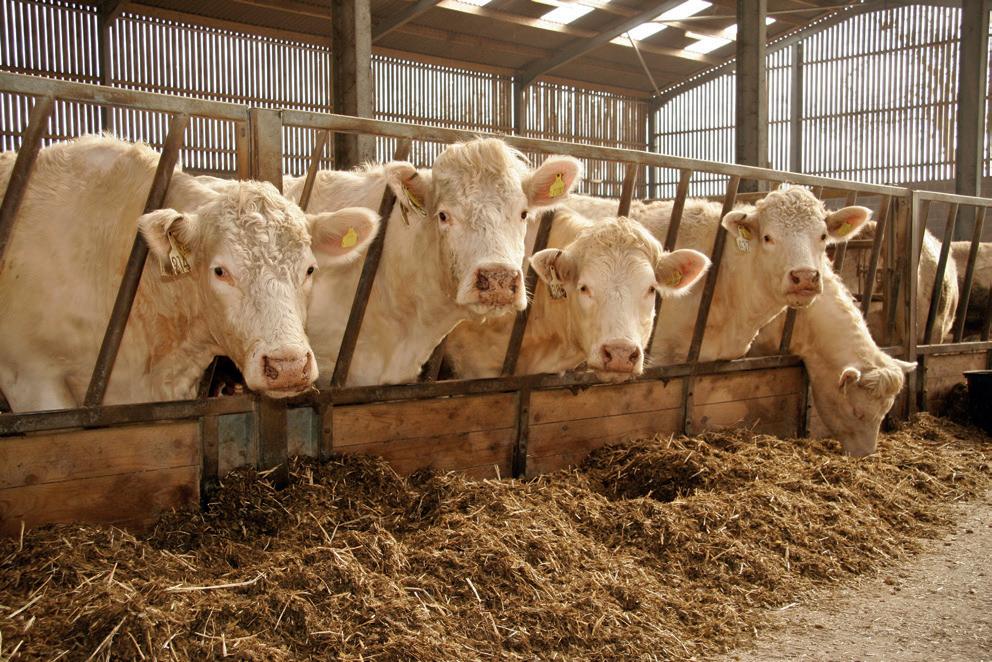
Feeding youngstock straw with a protein supplement, such as high protein molasses, instead of feeding grass silage. Dr Hawkey adds: “Protein is important for youngstock to grow frame.
“Farmers also need to feed enough physically effective fibre, ensuring an adequate forage to concentrate ratio. If you don’t feed enough forage, then the rumen won’t work properly and can lead to acidosis.”
Silage will be short on many farms this winter, say experts.
Producers should also consider feeding forage extenders. Examples include blends, nuts and moist feeds.
Dr Hawkey says: “One kilo of concentrate can replace 3kgs of silage. If you add that up across a 200-cow herd over a month, you can save a lot of forage.”
Other options include optimising grass by overseeding and taking extra grass silage cuts this autumn if conditions allow.
A good quality silage additive can help minimise dry matter (DM) losses in the clamp, helping to retain quality. A grain treatment can also increase the protein content of wholecrop.
Dr Hawkey says: “Stable treated wholecrop could balance out poorer maize. It can also reduce the need for bought-in protein and is easy to handle on farm.”
She adds: “Caustic-treated wheat can also improve digestion by creating a higher pH and providing a highenergy feed for early lactation cows. However, both must be fed as part of a balanced diet.”
WHICH IS GREAT NEWS FOR OUR PRICES!



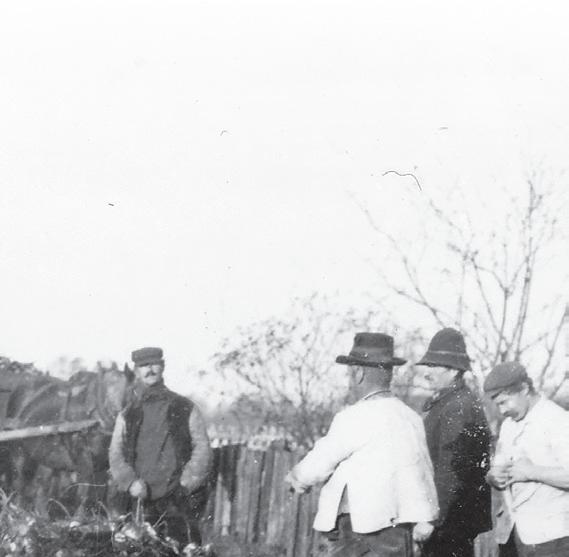
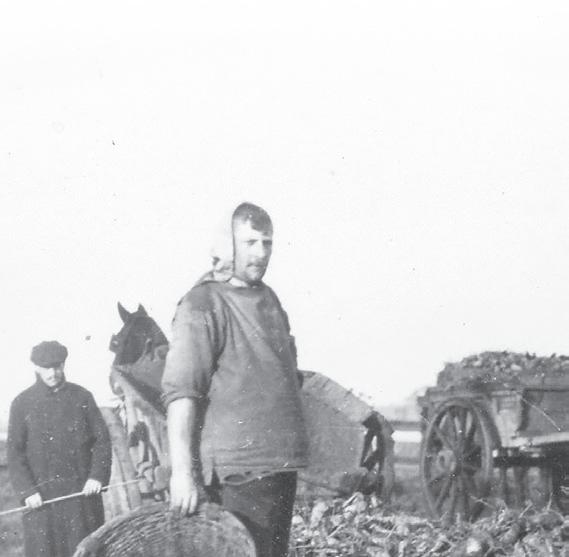
RESERVE THE NATION’S FAVOURITE FEEDCALL YOUR MERCHANT TODAY WITHOUT DELAY


High production livestock farming has led to some pastures requiring more frequent reseeding – often every three to five years – due to pressure to maintain high quality forage in grass swards.
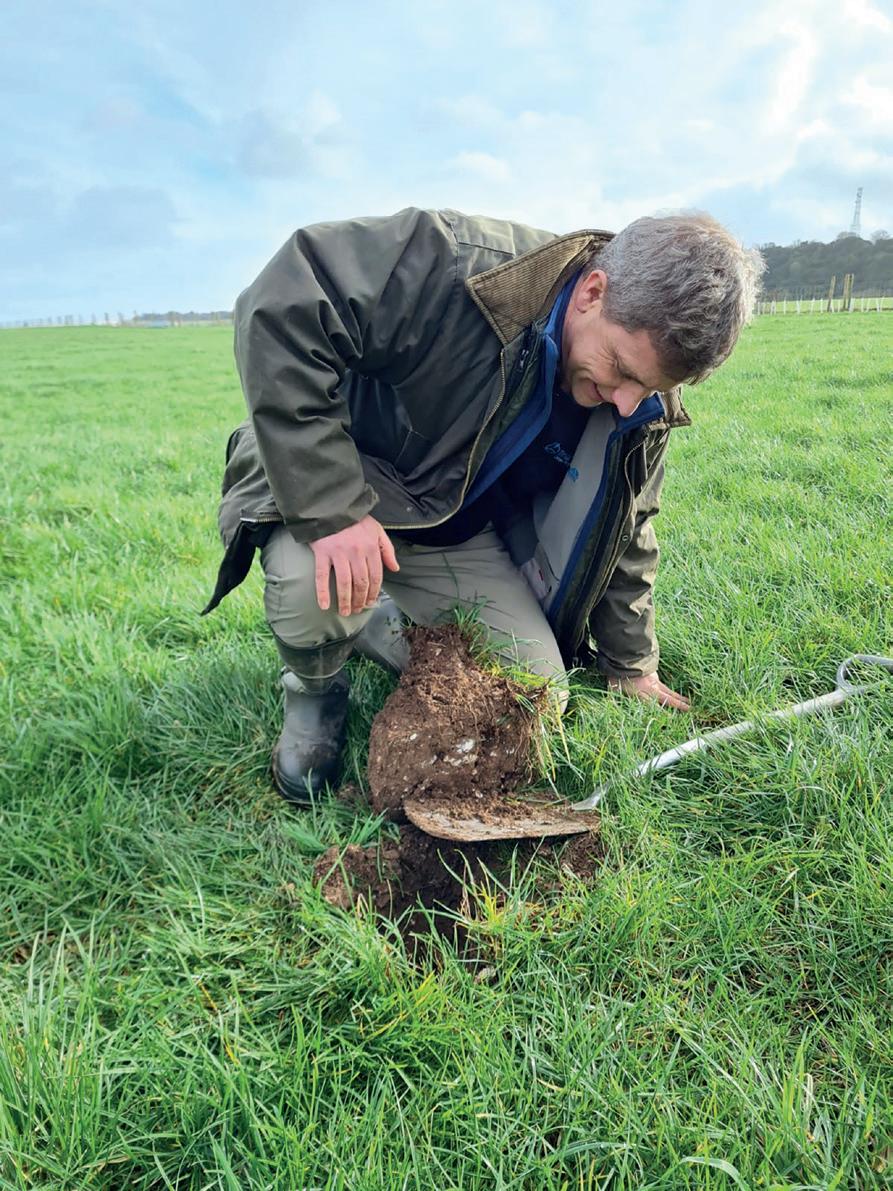
Despite providing short-term benefits in forage quality and palatability, this can have long-term implications on soil health.
Replacing pastures on a short-term basis prevents the grass from creating a robust root system.
The process of preparing the field for reseeding can be very disruptive to the structure of the soil. While the industry is moving towards minimum tillage for arable crops, sadly this isn’t always viable for replacing grassland.
Ploughing can be necessary in grassland replacement, but it exposes valuable organic matter and depletes the microorganisms that enrich the soil.
Whatever we can do to stretch the lifespan of a highly nutritional pasture means less soil damage is caused.
When feeding the newly established grassland, farms typically rely on urea and ammonium nitrate applications to push productivity.
These artificial fertilisers can be harsh on the soil microbiome and don’t encourage grass roots to go deep and seek the existing minerals.
As a result, soils may experience a reduction in mineral levels and increased soil compaction that reduces aeration. This can have a knock-on effect on grass palatability and growth.
Once a drop in palatability or quality is identified on-farm, it can seem like a quick fix to reseed. But it’s important to remember it’s what’s happening beneath the grass that needs nurturing.
One way to improve and maintain soil structure, health and fertility in existing grassland is to apply a soil conditioner.
Soil conditioners can be used to improve poor soils. They can also restore those damaged by previous detrimental management.
Conditioners can improve physical, chemical and biological qualities of the soil, such as nutrient availability, soil structure and activity.
What’s important to understand is this is a long-term approach to enhance and maintain soils to get them to their peak condition and stay there.
Anything you can do to maximise the recovery of grass following the silage season will put you in good stead for a resilient year ahead, when hit with weather challenges.
Applying nutrition in autumn, while grass is trying to revitalise without the stress of production, will make inputs more effective next season.
Slow-release fertiliser technology is your ally in these situations.
It helps to reduce wastage and, therefore, pollution and expense, but it also ensures the plant receives the right levels of nutrition at the right time in its development.
Soil conditioners, which have slow-release technology, can gradually release nutrients back to rejuvenate roots, boost plant and nutrient reserves and improve the soil index.
Ultimately, this process supports the production of high-quality grass and silage that has captured the key nutrients required for livestock diets,
Regular testing and assessment is the bedrock of any strategy to improve soil health and structure.
which should also help minimise reliance on purchased feed next winter.
Alongside applications of a soil conditioner, utilising organic matter in a nutritional plan is key to success.
Organic matter, farmyard manure especially, is typically in abundance on farmland grazed by livestock, so let’s make the most of it.
Resting muck and slurry to ensure nutrient content is sufficient, and soils are best able to convert organic matter to mineralised nutrients.
“Turning things on their head, making sure soils are in tip-top condition will also help improve the efficiency of your manure applications.
Challenging conditions in recent years have seen an increase in sales of rapidly growing oneyear leys as a quick fix to boost forage stocks – but these could mask deeper grassland problems.
Short-term solutions such as overseeding have played a key role in helping dairy and livestock producers alleviate the worst forage shortfalls. But they could create a false sense of security, says Jim Juby, of forage specialists Horizon Seeds.


“We’ve seen a significant increase in sales of Westerwold grasses and tetraploid-based grass mixes for overseeding in recent years and there is no doubt they have played a vital role for many producers.
“But this last spring also saw a 25% drop in sales of mainstream mixes for full reseeds and so there is a real concern that producers have cut back on investment in longer-term pasture management and this could be storing up problems for the future.”
On farms where waterlogging in the winter has damaged swards or the lack of rainfall in early summer has effectively killed off the most productive species, producers really need to bite the bullet this autumn and focus on full reseeds, says Mr Juby.

“It’s not an easy decision when cashflow is tight, but home-grown forage remains the most cost-effective feed you can produce and investment in grassland management to build resilience into long-term production is never a false economy.
“Delaying the decision to reseed at least the worst-hit parts of your grassland this autumn could have significant implications with inevitably
A healthy soil offers a wider range of biology, such as bacteria, fungi and earthworms, which will be more effective in recycling the nutrients applied from manure – it’s a bit of a chicken and egg situation, but once you achieve a good balance, you’ll reap the rewards.
To get the most from applications, an annual plan should be implemented, incorporating other nutrition elements.
But understanding the current state of play is essential. Prior to nutrient applications, you need to know the nutrition requirements of your soils and grass. Soil sampling and observing the physical structure will provide a good indication of what you need the soil conditioner to do.
Once this is understood, applications can be planned. But wait for the nutrient application cycle to start in late summer.
“Slow-release fertiliser helps to reduce wastageDavid Newton: Utilising organic matter is key to a successful nutrient plan.
continued from p35
when reseeding is delayed or swards
“If you don’t address your grassland issues in the short term, you’ll effectively be wasting half the nitrogen you apply and that’s a cost few businesses can live with, especially with the high fertiliser costs of recent years.”


Building the highest levels of risk mitigation into leys and ensuring producers get the most out of inputs puts the focus on the grass mixes used, explains Mr Juby.
“It depends on what you want to get out of your grassland. But regardless of your intended use, some basic questions can help you make the best decisions when it comes to choosing the right varieties for a reseed.

A good starting point is to make sure all the varieties in a grass mix are on the current AHDB Recommended List, says Jim Juby, of Horizon Seeds.
“A lot of advances have been made in recent years especially in critical areas such as performance consistency and response to nitrogen inputs.
“Understanding what is in your mix will also help you establish what the likely milk yield you can expect from your grass and allow comparison of different options to be made.
“A good quality silage ley should be capable of producing 18 – 20t DM/ha and a grazing ley should be not too far behind this. At current price levels this is worth around £2000/ha with 25 -30% DM silage worth £110/t DM and a yield of 18t/ha.

“Many worn-out and damaged leys prevalent on UK dairy farms would only be capable of producing 30 - 50% of this, so the economics of delaying a reseed simply do not stack up.”
Achieving all the benefits of a full reseed means investing in good quality seed, he points out. “Your grassland is the heart of your production system so it is pointless taking short cuts and opting for lower quality seed or mixes.
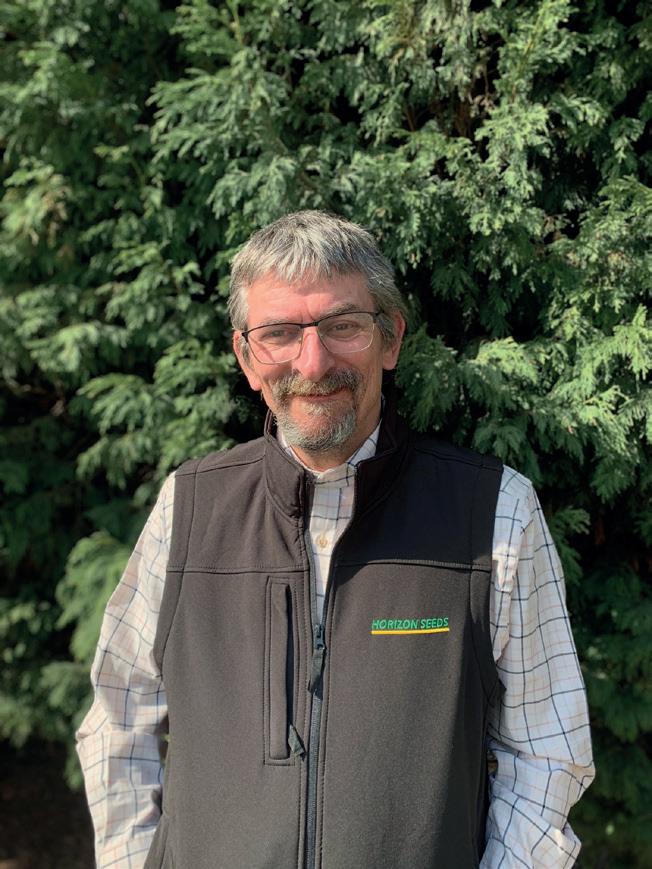
“You may save some money in the first year, but you’re likely to lose out on many of the advantages that come in subsequent years.
something like Yorkshire Fog or most of the other weed grasses that thrive
“Mixes are much more robust than single species varieties, for example, and have a greater resilience to disease threats as well as better ability to cope with diverse growing conditions.”
“Short-term leys are a great strategic option in difficult conditions, particularly when a full reseed is not possible due to weather or ground conditions, but they are not an alternative to a longer-term reseed.”

• Success will combat climate change
• Proposals are supported by farmers
Amajor project will investigate ways of growing new and unusual crops in the Fens while reducing greenhouse case emissions by maintaining water levels just below the soil surface.
The Fenland SOIL initative has secured funding from Natural Eng-
land, with a £450,000 grant to run until April 2025. It is open to projects that help to tackle barriers to grow commercially viable wetland crops on lowland peat soils in England.
Paludiculture – or farming on rewetted peat – is a system of agriculture which enables the profitable production of wetland crops, usually by raising the water table to achieve wetland conditions.
Maintaining water levels about 1030cm below the soil surface helps keep greenhouse gas emissions from peat to a minimum. This will help growers meet climate change targets while ensuring profitable production.
Suitable crops
A Defra review has already identified more than 80 suitable crops, although the current range of UK palu-
Crops suitable for wetland production include typha – better known as bulrushes or reeds. Farming reeds under re-wetted conditions can help restore wetlands, while creating an important source of fibre for the fashion industry.
Next-generation biomaterial manufacturer Saltyco creates textiles from reeds. It uses patent-pending fibre technology to transform Typa seed heads into an insulation material for the fashion sector.
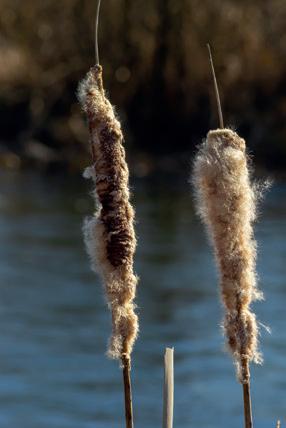
Called BioPuff, this insulaation material is used in clothing to keep people warm. Lightweight and naturally water repellant, the cluster structure of BioPuff mimics the insulation qualities of goosedown.
Bulrushes with blooking cattails
The plan aims to protect and enhance important peatland soils.
(Picture: Peter Moulton / Shutterstock.com)
Left: Robert Caudwell: important first steps.
diculture crops is currently limited mostly to watercress, a range of berries and products such as mozzarella and meat from water buffalo.
A commercial scale paludiculture trial will now take place across a number of internal drainage boards cover a total area of 25,601ha – bringing the total area of opportunity to some 36,800ha by the end of the project.
Megan Hudson, general manager of the Fenland SOIL iniaitive, said: “This award gives us a real opportunity to explore the commercial opportunities for wet crops and if a viable commercial market can be created.”
Peat soils contain over half the country’s terrestrial carbon stores and serve as a potent nature-based solution against climate change. But fenland drainage over the centuries means peat soils are drying out, release carbon into the atmosphere.
Lincolnshire farmer Robert Caudwell, who chairs the Lowland Agricultural Peat Task Force, said: “Reducing carbon emissions from lowland peat is vital as part of the government plan to tackle climate change.”
The government’s response was a big first step to achieving that goal, he added. “I am confident that the work that is already underway will give farmers opportunities to develop their businesses and contribute to the challenge of net zero.”

This award is a real opportunity


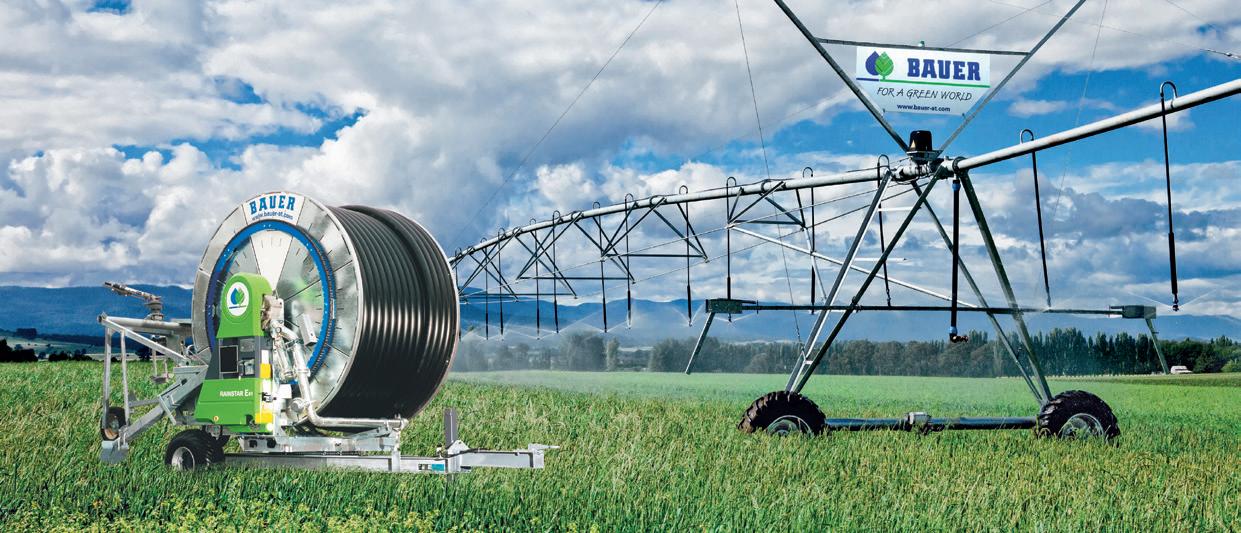
Agrowing number of water companies are paying farmers to protect river catchments from run-off and nutrient leaching by planting cover crops.
Anglian Water has been working with the Lincoln Institute for AgriFood Technology and local farmers to look at catch crops in the arable rotation. Supported by the Innovative Farmers project, the trial has assessed the benefits of cover crops over bare land.
Other companies – including Cambridge Water and Affinity Water – have also introduced cover crop schemes, recognising that healthy soil, leads to a healthy crop which requires fewer inputs, leading to better water quality.
Independent soil and carbon specialist Neil Fuller says there are numerous benefits associated with multi-species cover crops – both in terms
of improved farm productivity and reduced environmental risks.













"Many water authorities are beginning to reap the reward of sponsoring farmers to grow cover crops, not just in sensitive catchments but across the broader agricultural landscape,” says Mr Fuller.
'Early indications are that cover crops significantly reduce the amount of nitrogen and phosphorus that leaves arable fields over winter, actively preventing these nutrients from working their way into watercourses.

"There are also indications that the way cover crops can re-structure soil has a positive impact on root development and biological activity, which in turn alters the way water is held within the soil profile.




The cost of making cover crop seed available to growers is relatively small compared to the benefits it delivers. It can improve infiltration, drainage

and tolerance to drought, while holding on to some of our more mobile nutrients and pesticide residues.
Fast-growing cover crops can work to a degree when grown between winter wheat or oilseed rape and a following winter barley, for example, but the biggest benefits result from when they are grown between winter and spring crops, Neil Fuller points out.
"Trials suggest a good cover crop mix will produce 20-50t/ha of fresh matter above ground. This could contain more than 80kgN/ha, with a similar amount of potash and about a third of this amount as phosphate.”
As synthetic N accounts for roughly 75% of the carbon footprint of cur rent combinable crop production, cov er crops could be delivering a big reduction in emissions at farm level that would travel all the way from soil to supermarket, says Mr Fuller.
"Farmers that are growing cov er crops supplied by water com panies are reporting increas es in spring cereal yield that would be equivalent to apply
ing an additional 20kgN/ha.

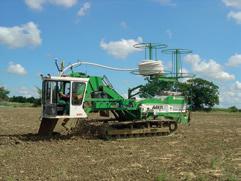
"On shallow and sandy soils, some of this yield uplift is coming from increased water holding, but tissue testing shows plants are also picking up more nutrition.
"That's great for most arable crops but our work has also shown that simple adjustments to agronomy can ensure this extra nutrition goes into yield rather than grain nitrogen in the case of malting barley crops.
"Getting climate-smart by integrating cover crops in the rotation at every opportunity, and really focusing on good soil and crop management, can provide a stack of environmental gains and real agronomic savings that increase over subsequent years."

Smaller carbon footprint
Cover crops also draw down a significant amount of atmospheric carbon and this can help decarbonise the production emissions of agricultural feedstocks such as cereals, oilseeds, grain legumes and po-
"There are biodiversity benefits too, with cover crops creating
respite habitat for pollinators and predators which can help in the suppression of aphids and take growers further on their journey to being insecticide-free.
“The governmnent's Sustainable Farming Incentive will contribute £129/ha for cover crops to be grown and that more than covers the cost of the seed and the management of the crop," adds Mr Fuller.
With growing interest in cover crops as part of sustainable agricultural practices for the future, KWS is launching a range of multi-species mixes designed to deliver specific benefits in a range of situations.

“The Fit4Next is a range of cover crops specifically tailored to complement following crops and add real benefit to the rotation,” says the company’s Kate Cobbold
“Work in Germany has shown such mixes add significantly to biomass growth and organic content of soils whilst preventing soil erosion at the same time.
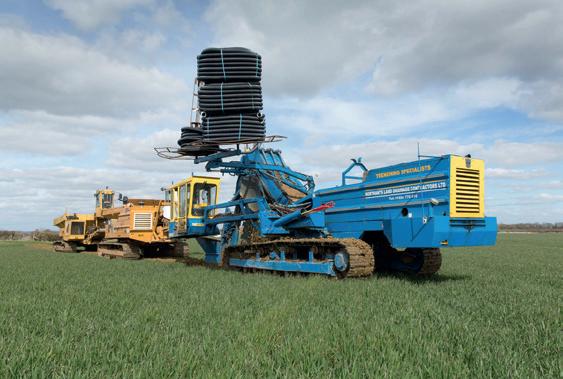
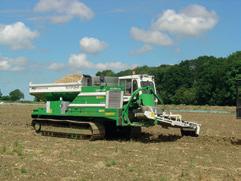
“KWS catch crop mixtures have also been shown to actively bind carbon in the soil with a far-reaching benefit to future sustainability.”
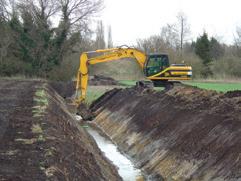
Healthier crops require fewer inputs









An innovative all-electric remote-control slope mower has been launched by McConnel.
Building upon the proven capabilities of the popular Robocut S300, the electric S300e offers the same level of performance but with the integration of electric power.
This means the S300e retains the features of the S300, including 55-degree slope operation and a 150m range, but with with zero emissions and much reduced noise.
The Robocut S300e is powered by two advanced Vanguard 48-volt lithium batteries, providing a run time of up to four hours for uninterrupted operation on a single charge.
Recharging the batteries typically takes around eight hours. For added convenience, a fast-charging option is available, reducing the charging time to just four hours.
Engineered for maximum efficiency, the Robocut S300e features a new 1.1m rotary mulching deck that has been specifically designed for electric operation.
Equipped with two powerful motors that directly drive the blades, the design ensures optimal efficiency and superior cutting performance, resulting in more effective mowing and a quieter experience.
The Robocut S300e made its pub-
Mark Weatherhead Ltd




Telephone: 01954 210 355

Mobile: 07885 202 005
Hardwick, Cambs CB23 7QL
lic debut at Flood and Water Live, a working demonstration hosted by the Association of Drainage Authorities (ADA) on the 5-6 July in Lincolnshire. The machine is set to enter full production later this year, with delivery expected in early 2024.
Book in advance online and get exclusive discounts on your tickets
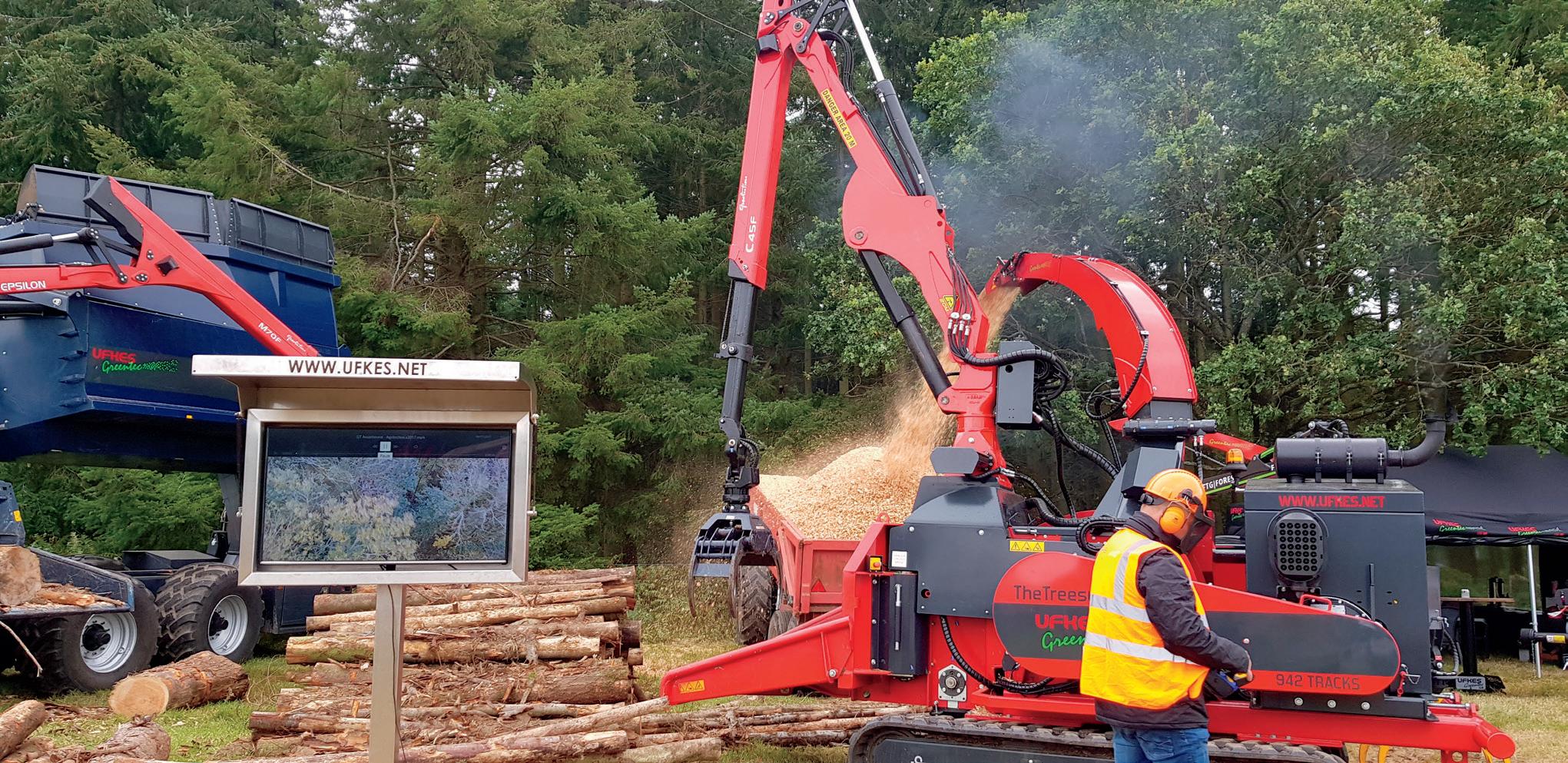
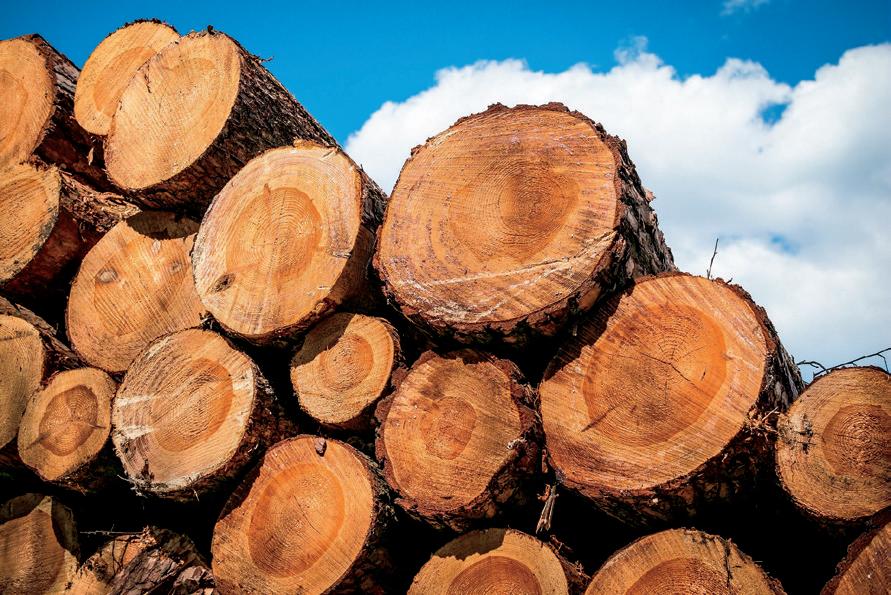
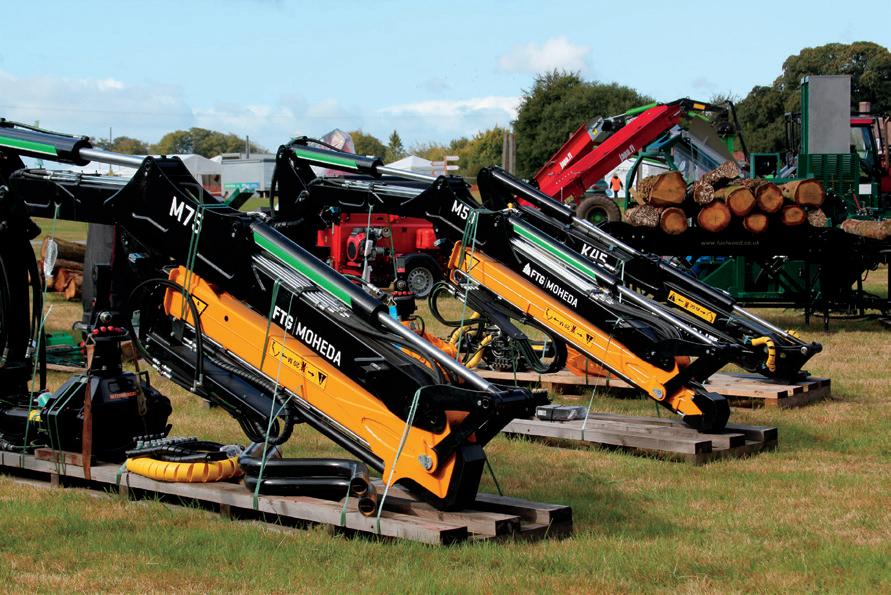
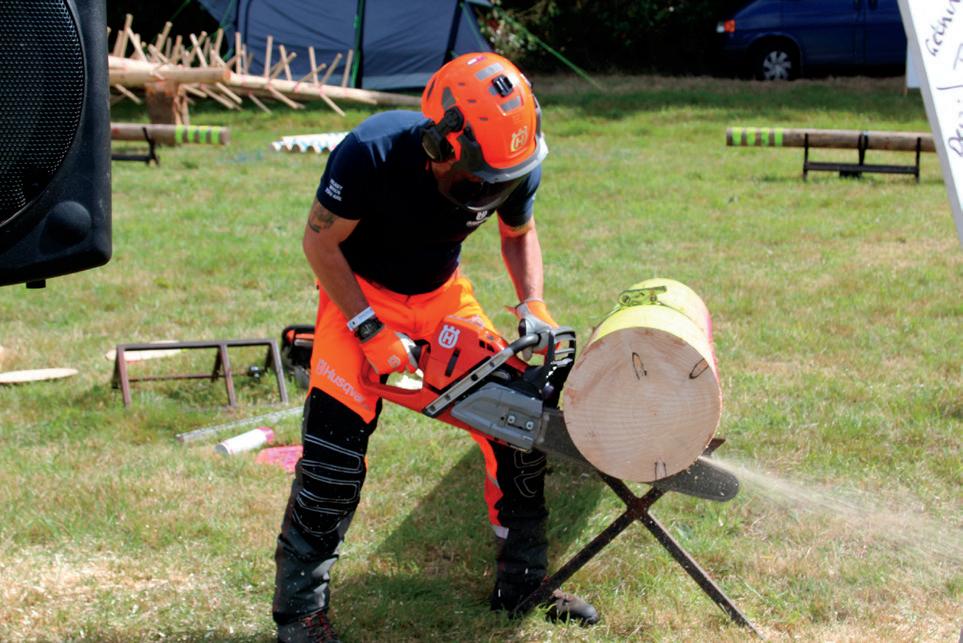
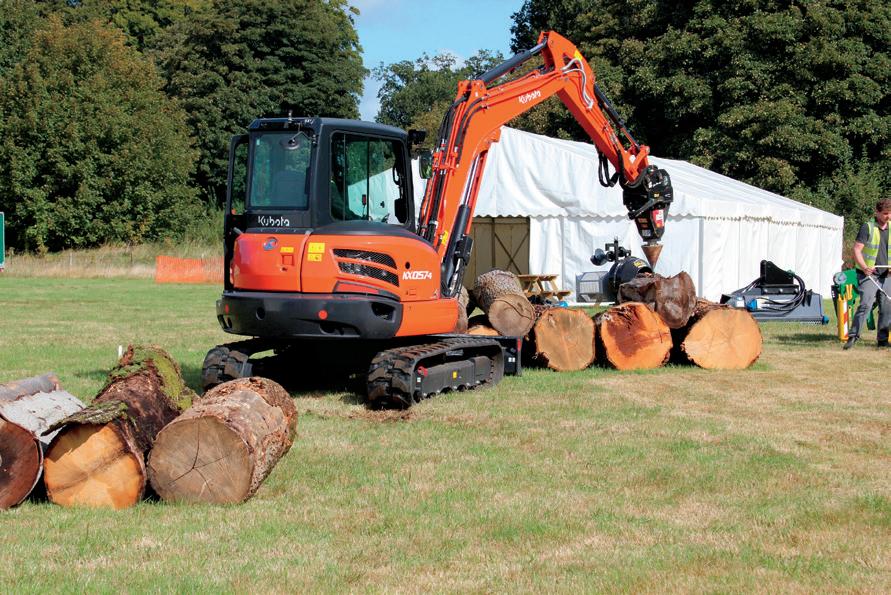
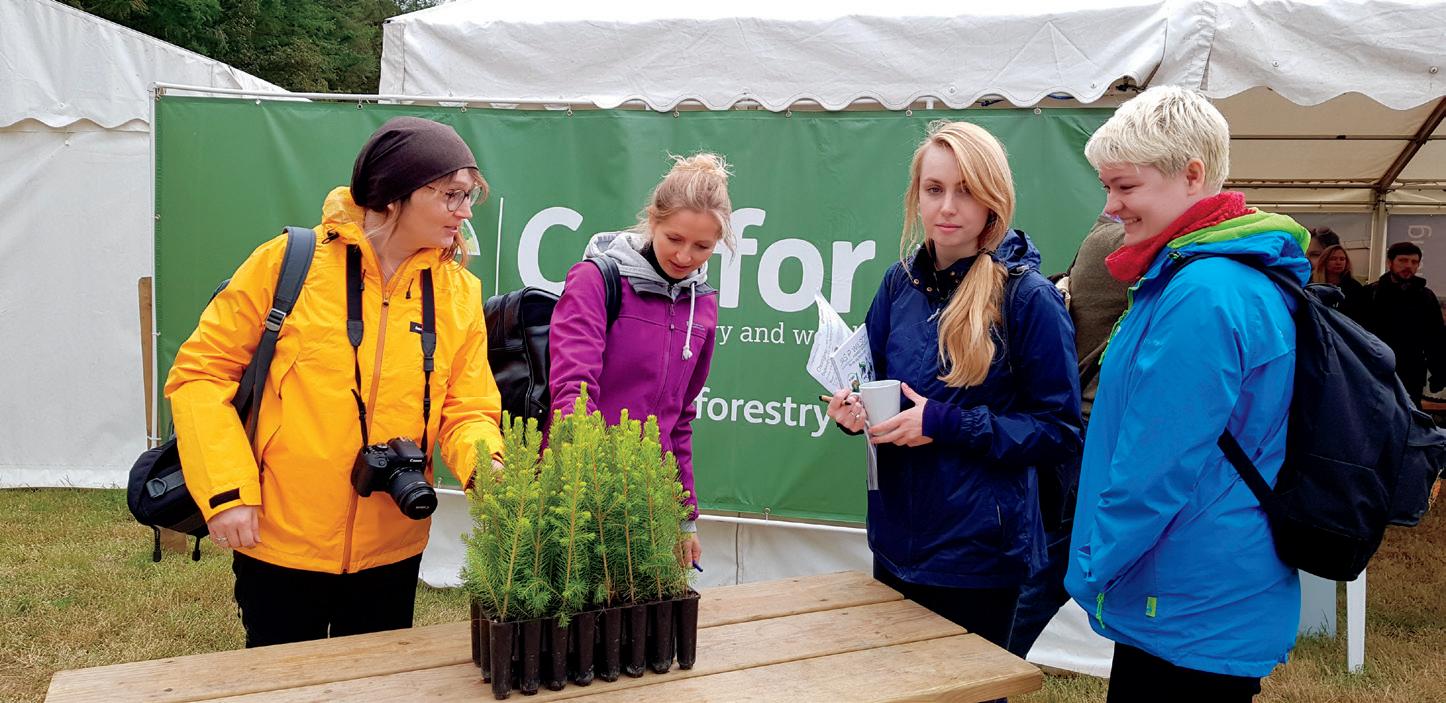


Trees could be the key to making food production more resilient amid climate change and biodiversity loss, say scientists.
Agroforestry – combining trees with livestocks or crops – can protect animals during heat waves, boost yields and reduce river and air pollution, say researchers.
The findings will be presented at the UK’s first Agroforestry Show – along side new discoveries by farmers who are already incorporating trees on their farms as tools for climate resil ience while producing food.

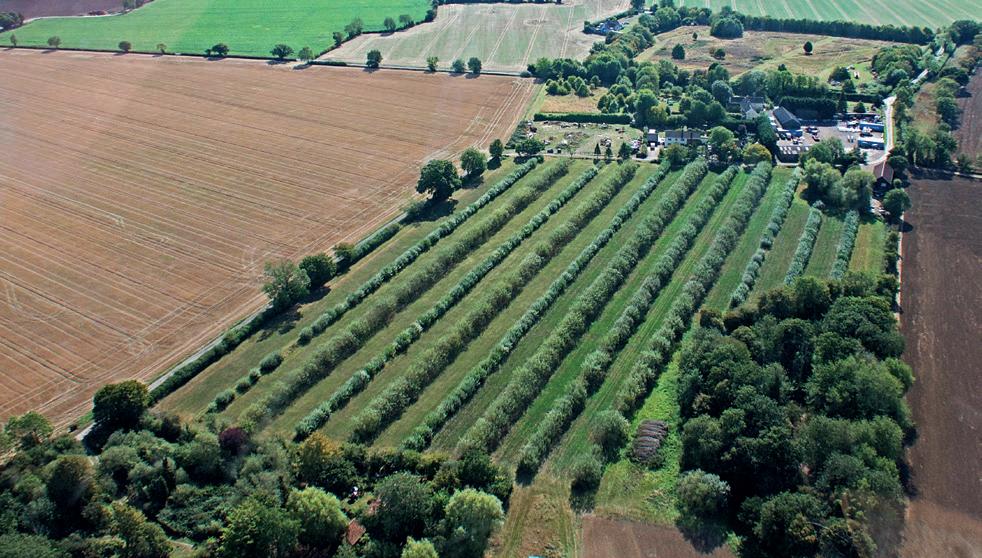
Organised by the Soil Association and Woodland Trust, the two-day event is being held on 6-7 September at Eastbrook Farm, near Swindon, Wilt shire. It aims to show farmers how to introduce agroforestry on their land.
The event programme will feature more than 100 speakers on all aspects of agroforestry – including how trees can prevent river pollution and reduce ammonia emission, plus insights into the benefits of tree shade to reduce heat impacts on livestock.
Farmers already practising agrofor estry will share their experiences –both what has worked and what hasn’t with tree planting – and the impacts it has on nature, with new updates on farm research supported by the event organisers.
The need to adapt to a rapidly changing climate has becoe a critical concern for farmers. Speakers will reveal how adopting agroforestry can serve as an important buffer in heatwaves as well as in cold and wet conditions.
Drier and hotter summers can have devastating effects on both arable and livestock farms
But shade from trees can prevent heat stress on crops and animals –
come from tree products and build biodiversity into their land.
Modelling by Cranfield University suggests that establishing agroforestry on 30% of England’s grasslands could help pastoral livestock systems reach by 2051.
Helen Chesshire, lead farming advocate at the Woodland Trust said: “We know that bringing more trees into the UK farmed landscapes is essential if we are to meet nature and climate goals.
“Agroforestry does this while supporting farmers to produce agricultural outputs – a win-win scenario. But with less than 5% the UK agricultural area under agroforestry this show is needed to give farmers and foresters the confidence to implement it
Eastbrook Farm – which is hosting the Agroforestry Show – is managed by Soil Association chief executive Helen Browning. She will give guided tours of her seven-year agroforestry project which has been supported by the Woodland Trust. Key sessions at the event include trees, climate change and resilience. This will focus on ways agroforestry can help adapt to more erratic weather and extreme climatic event – as well as tree species aspects best suited to agroforestry.
Other sessions include hedges, edges and farmland trees. This session will look at the practical management of farm native woodlands,
hedges, shelter belts and in-field trees to support livestock, crops, nature and future generations.
The importance of trees in resilient livestock systems will examine the potential for trees to support good welfare for farmed animals –including protection against extreme weather patterns while optimising the use and value of home-grown feedstuffs.
A session on silvopasture will look at how tree planting best be designed to shade and shelter cattle. Speakers will include farmers and experts from the Farming and Wildlife Advisory Group.
For full details, www.agroforestryshow.com
Above and below: Integrating trees within arable fields can be good for business and the environment.











ickets are selling fast for this autumn's Confor Woodland Show – a two-day extravaganza for the forestry and timber industry, including the latest innovations in machinery and opportunities for business growth.


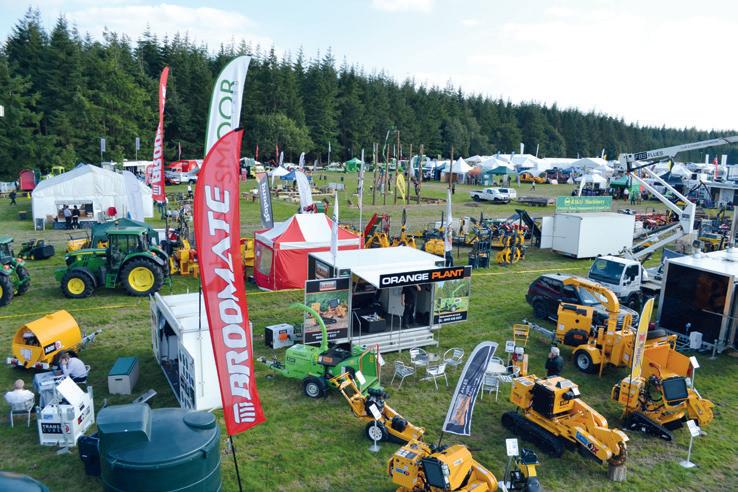
The show is the place for everyone interested in trees and wood to hear about the latest products and services, receive practical advice, network with peers – while enjoying the demonstrations and seminars.
Held this year at the Bath & West Showground on 21-22 September, the event promises a valuable snapshot of the industry,


oplastics, trends in the forestry marketplace and woodland management.












Visitors can expect to see machine demonstrations, chainsaw carving and archery showcases and enjoy the food and drink.
Additionally, the Forest Workers Zone will be a key feature of the Confor Woodland Show this year, acting as a 'one stop' hive of activity for people working in the practical side of the industry to come for information, advice and networking.
Single and two-day tickets can now be purchased online. Bookings made before the event will cost less than tickets purchased at the gate and special discounts are available for students and Confor members.

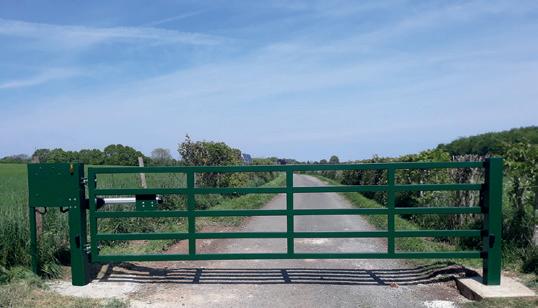

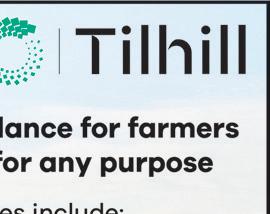







News is seldom good when the phone keeps ringing. It often means there’s a big problem –especially when it happens at a busy time, such as harvest or autumn cultivations.
With new houses springing up, our village is attracting new homeowners. Some of them have been here less than a year. But they have already discovered my phone numer and mistakenly assume – somehow – that they are countryside experts.
The latest voicemail asked me why I was cutting down a hedge when it was bird nesting season. The anonymous caller kindly informed me I had been reported to the local council. In fact, it was a new homeowner who cut down the hedge to improve his view.
Yet residents decided it was my doing. The anonymous phone calls were followed by anonymous letters. The writers and senders were in no doubt I was the culprit. After all, that’s what farmers do, right?
From memory, when we were in stewardship, cutting down a hedge before Septem-
ber was a big no-no. Stewardship certainly meant no hedgecutting during the main breeding season for nesting birds – usually March to August.

It’s an offence to intentionally take, damage or destroy the nest of any wild bird. So it wasn’t long before I received a visit from a local council official – accompanied by the tree enforcement officer.
Any landowner – and many farmers –reading this will appreciate how difficult it can be to establish who owns a roadside hedge. But the local parish council quickly decided it was my hedge and therefore the fault was definitely mine too.
After much discussion and boundary checking on my part, the parish council then reluctantly agreed that the hedge was most likely jointly owned by the council and myself – and that further inquiries should be directed at the new homeowner.
The tree enforcement officer made a number of other conclusions too. These included
a distinct lack of evidence of any bird nests in the felled hedge – despite nests being present in the uncut hedge either side.
The species of toppled hedge was – in the opinion of the enforcement officer – not a protected species. Some mature hedgerows are indeed protected by law – but this would not normally apply to garden hedges.
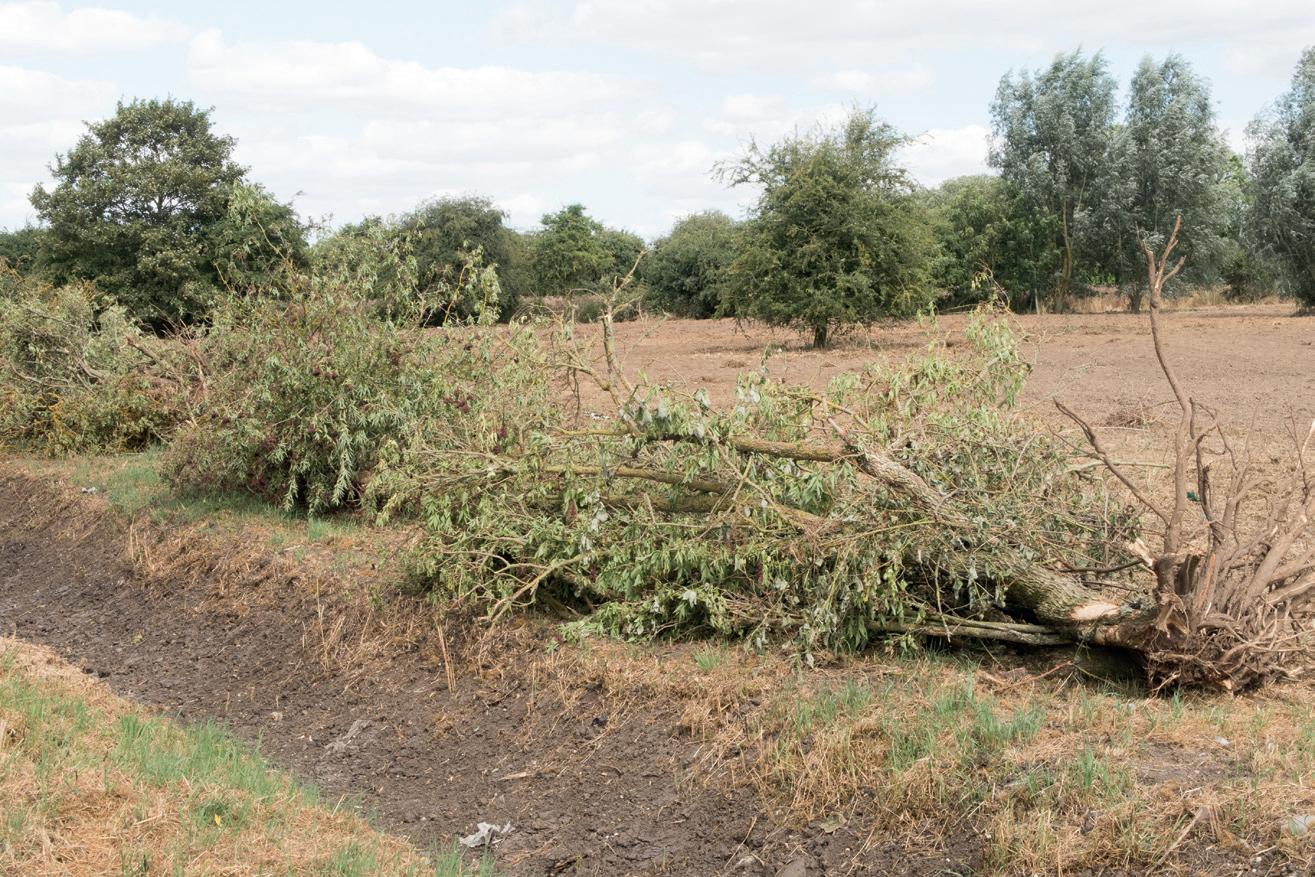
The hedge had been cut down to ground level. Despite this, the stumps remained. This meant the roots were still attached and the hedge would grow back. And because the hedge was outside the new-build development, no action could be taken.
So to recap, farmers should be prepared to have the book thrown at them when it comes to cutting down hedges. But the contractor who cut down the hedge for the landowner wasn’t even reprimanded – despite failing to check on ownership.
The homeowner escaped without retribution too. Yet had I contacted the police to complain about the hedge being destroyed, they would have laughed at me for getting upset over a bit of greenery and a few clippings.
As farmers, we spend years and years and a considerable amount of money planting and restoring hedges. And for what exactly? Not much, it seems – and certainly very little thanks or appreciation.
The parish council – initially so keen to point the finger – are not going to take any further action against the tree surgeon or the homeowner. And in future it seems I will escape action too when cutting down hedges –so long as the roots are still attached.
